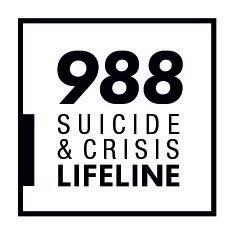






Reflecting changing times and legislation, Americans are now more apt to light up a joint or pop a weed gummy on a daily basis than they are to raise a glass of wine or beer, new research shows.
Among folks who said they used either marijuana or alcohol each day, marijuana became the preferred choice as of 2022, according to study author Jonathan Caulkins.
In terms of the sheer number of people who drink or use pot or alcohol at least occasionally, alcohol remains in the lead.
However, "a good 40% of current cannabis users are using it daily or near daily, a pattern that is more

associated with tobacco use than typical alcohol use,” Caulkins told the Associated Press. He's a cannabis policy researcher at Carnegie Mellon University in Pittsburgh.
The new study, published May 22 in the journal Addiction, was based on an analysis of the National Survey on Drug Use and Health which, among other behaviors, tracks tobacco, alcohol and drug use in the United States.
For years, alcohol topped marijuana as the substance of choice among "daily users." But in 2022, 17.7 million people told the survey they ingested marijuana on a daily or near-daily basis, compared to 14.7
million who did so with alcohol. That's not overly surprising, since rates of daily or near-daily marijuana use rose 15-fold among Americans between 1992 and 2022, Caulkins noted.
It also reflects big changes in public policy, with most states relaxing laws against the use of marijuana, although it's still illegal at the federal level.
The federal government announced earlier this month that it has moved to reclassify marijuana as a less hazardous drug.
Still, having more Americans using marijuana each day isn't necessarily a good thing, one expert said.
Speaking to the AP, Dr. David Gorelick, a psychiatry professor at the University of Maryland School of Medicine, believes far too many people are now reaching problematic levels of weed use.
"High frequency use also increases the risk of developing cannabis-associated psychosis,” a severe condition where a person loses touch with reality, he added.
One study published earlier this week in the journal Psychological Medicine, found that teens are at especially high risk for psychosis, with risks rising 11-fold if they regularly use marijuana.

















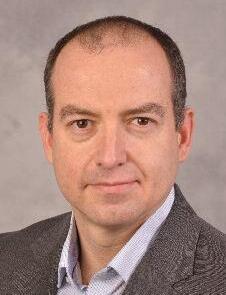





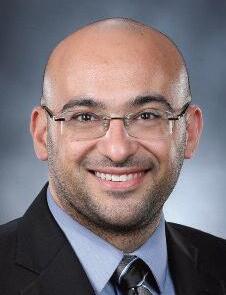








By Chris Motola
Thomas Schulze, MD
Psychiatric
Q: You’re a professor at Upstate and you’re the president-elect of the World Psychiatric Association. I understand it will be a while before you’re president, though.
A: Yes, it’s a three-year term as president-elect and then a three-year term as president. I do have a parttime position with Upstate but I’m not a regular professor there because I live in two worlds. I live in Germany and here. As a matter of fact, tomorrow I’m going back to Europe. I’m also a professor and chair in Munich. So two worlds, two lives, two citizenships, two houses.
Q: Does having a foot on two continents help run a worldwide organization?
A: I would think so. I’m researcher. I’m a psychiatrist. And I’m a scientist as well. And I’ve been doing this since 1997. I started in Germany, then I went to America, but I’ve always been very international. I was once president of the International
And we sometimes take on projects at the request of member societies. For instance when the field is facing hard decisions by governments or funding is cut we’ll go talk to representatives and try to find solutions. Right now I’m very interested in human rights and I work very closely with the Uyghur population, with allegations and mounting evidence of abuse of psychiatry in China and also maybe in Russia. And we have to start investigating yet. So it’s trying to help our member societies develop the mental health field in their countries. Our member societies are our foundation.
Q: Now your personal research has largely been in the genetics of psychiatry.
A: Yes, since I started in 1997. I’ve been doing genetics, genetics of psychiatric disorders. I was part of a group at the University of Bonn in Germany, which was one of the leading centers for psychiatric genetics at
would basically explain schizophrenia, bipolar disorder, depression or what have you. What we’ve learned over the years, however, is that all of these disorders are highly polygenic with hundreds to thousands of genes each only having a small effect on the overall clinical presentation. But they work together. They interact with each other and environmental factors. So it’s become more and more complex. But this is actually an amazing gain in knowledge because we can refute the notion that there are just a few genes at the basis of these disorders. So that started becoming general knowledge in the first decade of the millennium. We were able to use the results of the Human Genome Project. We had so many more genetic markers to work with, better technology. And sure enough it’s more than one gene, more than 100. It’s polygenic. So now the question is how do you use that? The hope is that these many genes that you have, you build profiles and scores. And maybe people will differ in their scores, whether it’s for diabetes or mental illness, for any trait. And maybe you use that score in treatment planning and therapeutic purposes. And that’s what I’m doing at Upstate and my site in Munich. I’ve got funding from the European Union to do pharmacogenetics, trying to find genetic factors that will improve treatment outcomes and that’s eventually what we want to do here too. But it’s a worldwide endeavor.
Q: You mentioned earlier the idea of psychiatric abuse. That’s not a term you see paired with a medical special-

There’s a non-governmental organization called Safeguard Defenders that found 99 cases of abuse in China two years ago. I went to work with them because we have to independently confirm these things. In China there’s a right to petition the government. Let’s say you’re in a province and some governor does something you think is bad for the community — you can blow the whistle and go to Beijing to petition the government. But then the local official may hear about this and take action against you and you may end up in a psychiatric hospital. And there are allegations that this kind of thing is coming back to Russia as well.
Q: What are some of the challenges in developing diagnostic criteria that is objective as opposed to socially or politically convenient?
A: Let’s face it — psychiatry has a problem that will never go away. We don’t have an X-ray. If you break your leg playing soccer, you get an X-ray and they see where the ankle is broken. And then they can categorize it based on what they see and prescribe a treatment plan. If you’re acting strangely or depressed or have suicidal thoughts, there’s no X-ray, no lab tests. There’s nothing. It is observation. Talking. Listening. Sometimes they don’t talk to you. Sometimes they run away because you’re part of their delusional system. So we come together and look at the latest data and try to group symptoms. And we give these groups of symptoms names. And that’s how disorders are created. They’re not created in the sense that they’re bogus, but it’s a grouping of and interpretation of these symptoms — it’s manmade. That’s why diagnostic criteria are never carved in stone, why they shift over time as more information, better studies become available. Maybe one day we’ll have our X-ray, or our polygenic risk score. The only problem here is that we may be trying to build the X-ray on a phenotype that isn’t correct. So it can be kind of circular. We use criteria to come up with diagnoses, but then we use diagnoses to try to refine our criteria. So compared with other areas of medicine, that’s one of the biggest challenges we have.
Name: Thomas Schulze, MD Position: President-elect of the World Psychiatric Association; Professor of Psychiatry and Behavioral Sciences at SUNY Upstate Medical University
Hometown: Nuremberg, Germany Education: University of ErlangenNuremberg; University of Barcelona; University of North Carolina at Chapel Hill
Affiliations: SUNY Upstate Medical University, University Hospital of Munich, John Hopkins University, National Institutes of Mental Health Organizations: World Psychiatric Association; International Society of Psychiatric Genetics; American Psychiatric Association; American College of Neuropsychopharmacology Family: Wife, two children Hobbies: Travel, languages




Internal Medicine Associates of Auburn is a private group practice comprised of four internal medicine physicians and five nurse practitioners, certified in family and adult health.
Internal Medicine Associates of Auburn rates in the top-tier among primary care medical groups in Upstate New York based on their quality performance scores year over year, and is also an IPRO Quality Award Honoree which recognizes outstanding performance by healthcare providers and stakeholders throughout New York State.
Nearly one in every six U.S. adults have engaged in the ancient practice of yoga over the past year, new government data shows.
In fact, as Americans increasingly turn to alternative or complementary health approaches, "the largest increases [have been] in the practice of yoga," noted researchers Nazik Elgaddal and Julie Weeks. They're with the National Center for Health Statistics (NCHS), which is part of the U.S. Centers for Disease Control and Prevention.
Their new report is based on 2022 data from the ongoing National Health Interview Survey.
According to the data, yoga remains more popular among women (23.3% reporting past-year use) than men (10.3%).
It's also more popular among the young (ages 18 to 44), with 21.3% in that age group saying they practiced yoga, than the middle-aged (14.1%) or those aged 65 or older (8%).
The well-off are also more likely to engage in yoga than less affluent folks. Overall, 23% of people in the survey's highest income bracket said
they practiced yoga versus 10.4% of those at the lowest income level.
As to why Americans are engaging in the ages-old Indian practice, about 80% of yoga practitioners cited "restoring overall health," the CDC team found. That was especially true for folks aged 45 to 64.
Meditation is often being performed in conjunction with yoga: Just over 57% of all practitioners said they meditated as part of yoga practice. Lower-income people were more likely to engage in meditation and yoga together compared to better-off folks, the data showed.
Pain relief was another reason cited by many who practiced yoga: About 29% said they engaged in yoga to help "treat or manage pain," the survey found.
Again, lower-income people who engaged in yoga were more likely to say that they used the practice to ease pain compared to higher-income people.
The findings were published June 12 as an NCHS Data Brief.
Editor & Publisher: Wagner Dotto • Associate Editor: Stefan Yablonski • Writers: Deborah J. Sergeant, Jim Miller, Gwenn Voelckers, Anne Palumbo, Chris Motola, Melissa Stefanec, Eva Briggs (MD), Mary Beth Roach, George Chapman Advertising: Amy Gagliano, Pam Roe, Tom Bachman Layout & Design: Angel Campos-Toro • Office Manager: Allison Lockwood A monthly newspaper published by Local News, Inc. 33,500 copies distributed throughout more than 1,000 high-traffic locations, including all Wegmans stores.
In Good Health is published 12 times a year by Local News, Inc. © 2024 Local News, Inc. All rights reserved. P.O. Box 276, Oswego, NY 13126 Phone: 315-342-1182 • Fax: 315-342-7776 • Email: editor@cnyhealth.com
No material may be reproduced in whole or in part from this publication without the express written permission of the publisher. The information in this publication is intended to complement—not to take the place of—the recommendations of your health provider. Consult your physician before making major changes in your lifestyle or health care regimen.
The IPRO Quality Award earned by the practice was specifically in recognition of organization-wide commitment to quality improvement and exemplary performance in the practice’s ongoing transition to value-based care.
SERVING THE AUBURN COMMUNITY SINCE 1975


Open Monday through Friday and four centers open Saturdays Prompt, courteous and no appointment needed. Hours and directions at laboratoryalliance.com

By George W. Chapman
The mental health crisis within a crisis is the impact of a family member undergoing a mental health issue on their family.
A 2022 study conducted jointly by the Kaiser Family Foundation and CNN found 90% of respondents believe we are in a mental health crisis in our country. Access and cost are the two largest barriers facing patients and their families. A family in crisis could involve a family member living on the streets, a family mem-
As the election looms ever closer, once again the Affordable Care Act is a political football. Ignorantly proclaiming “the ACA is terrible healthcare,” some political leaders denigrate all the insurance companies, physicians, nurses and hospitals that pay for or provide the care to more than 45 million patients. Since the genesis of the ACA in 2010, the number of uninsured has been cut in half from 15% to just more than 7%. Most of those covered by the ACA qualified via expanded Medicaid coverage in their state. (For example, the threshold to qualify for Medicaid was raised from earning less than $12,000 a year to earning less than $15,000 a year.) For those that earn more than the threshold, up to 400%, they can purchase a commercial plan online at discounted rates based on their income. The federal government reimburses the participating insurance plans for the balance of the full premium. The subsidy runs around $1 billion annually. There is now record commercial insurance company participation, averaging six companies per ACA market. The ACA did not just impact the under or uninsured. For ALL of us, you cannot

ber institutionalized because a threat to self or others, a family member overdosed or attempted suicide. The support available to families is just as lacking as the support for the family member in need of treatment. The survey of families in crisis revealed 28% had a family member institutionalized; 21% had a member in an emergency department for an overdose; 14% had a member living on the street; 16% said a member was homeless; 8% had a member
be denied coverage by any carrier for a preexisting condition. Plans cannot charge higher premiums if you had what was once considered a preexisting condition. Plans cannot impose lifetime limits for an illness.
The ACA limited out-of-pocket costs and required carriers to offer preventive care without any out-of-pocket costs to the member. Families can keep their children on their plans up to age 26. The ACA made it far easier for consumers and businesses to compare plans. Bronze, silver and platinum levels of insurance must meet basic coverage requirements. (Most covered by employer-sponsored insurance are in silver plan.) Insurers cannot discriminate against small businesses. Finally, insurers must spend at least 85% of their premiums collected on claims. If they spend less than 85%, it must be rebated to the employer. This prevents price gouging by the carriers.
In 2022, 48,000 of us were killed by guns, half by suicide. That’s about 132 gun deaths a day. The leading cause of death among children and teens is guns. To develop an effective prevention and
with an eating disorder; 20% reported a family member with cutting or self-harm behavior; 16% reported a member had attempted suicide; 50% of the families reported one or more of the above; 40% said the member crisis had a major negative impact of family relations; 57% of the families surveyed had incomes less than $40,000 while 43% had incomes more than $90,000.
counseling program, the government needs better data from hospitals, emergency rooms and physicians regarding gun related injuries and deaths. Hospitals will receive extra funding for compiling and reporting the data which has yet to be determined. (The data collection will not reveal names.) Even funding for just studying gun violence is a political football in Congress. A scant $25 million had been earmarked for the study. By comparison, three times that amount is earmarked to study teenage drinking.
The impact and harm of that record-breaking breach a couple of months ago at United Health’s claims clearinghouse, “Change Health,” is still being felt. It disrupted almost HALF of all claims filed by physicians, hospitals and pharmacies. Consequently, the DHHS office of civil rights is allowing affected providers to require United Health to notify their patients of their data that was stolen.

MA plans are offered by commercial carriers as an alternative
to traditional Medicare. Seniors are enticed to enroll by expanded benefits (preventive services, dental, vision and even free gym membership) without an increase in their premiums or what is deducted from their monthly social security check. The concept makes a lot of sense. By offering these extra benefits, MA plans expect that their seniors will be healthier, which reduces future claims. So, the investment in the extra benefits offered to seniors by MA plans will be recouped down the road. More than half of all seniors, about 33 million, have opted for MA plan. Initially, MA plans were covering “younger” or “less risky” seniors (65-70) who still didn’t require a lot of medical services. Commercial profits were good and they couldn’t enroll savvy seniors fast enough. However, those “younger” seniors are now in their 70s and 80s and here come the claims. According to some MA plans, profits are declining. Consequently, they are increasing denials and slowing the approval process. Providers and health systems aren’t standing for this, so many are threatening to refuse participation and accept only traditional Medicare. This could in turn force many MA members back to traditional Medicare, especially if their favorite providers drop their MA plan. MA plans are paid for each member enrolled by CMS, which also runs traditional Medicare. To entice commercial plans, CMS offered an enhanced premium to cover startup costs. So initially, things were running well for these plans. These enhanced MA plans cost CMS about $5,700 year per enrollee versus about $5,000 per traditional Medicare enrollee. Industry experts believe that, despite the kvetching, most MA plans will hang in despite lower profits and will adjust.
The national association that represents skilled nursing facilities is suing CMS over unreasonable staffing requirements that will be harmful to patients and financially untenable. The association argues the staffing requirements are a knee jerk reaction to the nursing home deaths during the pandemic. While a quarter of COVID-19 related deaths occurred in SNFs, the frail elderly were generally acknowledged to be most at risk, no matter if at home or in an SNF. The mandated staffing requirements are NOT supported financially via enhanced reimbursement from either Medicare or Medicaid. Hundreds of financially strapped SNFs could close unless there is some sort of compromise.



George W. Chapman is a healthcare business consultant who works exclusively with physicians, hospitals and healthcare organizations. He operates GW Chapman Consulting based in Syracuse. Email him at gwc@gwchapmanconsulting.com.




Say hello to a more convenient way to stay healthy in Oswego County. ConnnextCare offers a comprehensive set of services - family and internal medicine, pediatrics, dentistry, psychiatry, substance use disorder treatment and social work all under one medical group. Patients within our network can visit any of our seven locations at any time.
ConnextCare also offers medical, dental and mental health services at eight School Based Health Centers in five Oswego County school districts.
WALK-IN APPOINTMENTS NOW AVAILABLE IN THE PULASKI OFFICE
MONDAY - FRIDAY 7:00AM - 6:00PM Central Square (315) 675-9200 Fulton (315) 598-4790 Oswego (315) 342-0880 Pulaski (315) 298-6564 Parish (315) 625-388 Phoenix (315) 695-4700 Mexico (315) 963-4133

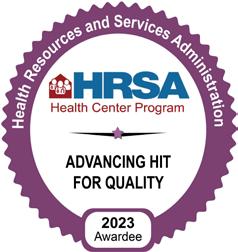




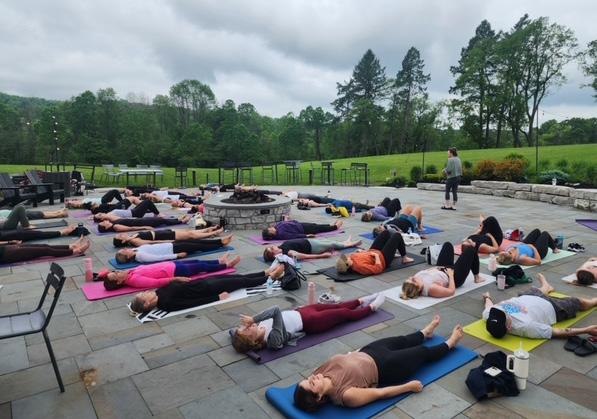

By Norah Machia
Getting outdoors to exercise helps with mental and physical health, and the added stimulation of terrain, including the grass and trees, makes people feel more connected to their environment.
Listening to natural sounds and breathing fresh air has also been shown to lower blood pressure and reduce stress, according to recent studies.
Central New York yoga instructors agree that being outdoors helps nourish the body and soul while offering the chance to feel attached to the natural world.
“People just want to be outside in the warmer weather, especially in the morning,” said Helena Zera, owner of Vyana Yoga in Manlius. “Our yoga practice teaches us that our bodies and nature are connected.”
Her studio offers free outdoor yoga classes on Saturdays at 8 a.m. throughout the summer at Clark Reservation State Park, Jamesville. The free classes are also offered on Sundays at 11 a.m. inside the studio at 131 W. Seneca St. to introduce people to the practice of yoga.
Both options offer a great opportunity for first-timers or those who haven’t practiced in awhile, but would like to begin again, she said.
“We always start yoga by coming into the breath, and we link the breath with movement,” said Zera. “We want people of any age and of any size to feel comfortable doing yoga.” The location in Jamesville is not too far from the studio, and
seemed like a perfect fit because “everyone loves Clark Reservation,” she added.
After a recent outdoor yoga session at Clark Reservation, instructor and registered nurse Maria Loudis noted that “people spend so much time indoors, at home or in an office, even in their cars,” she said. “But how much time do people spend outside?” Being outdoors and connecting with nature “helps people feel better,” she added. “It lifts their mood.”

One of the main goals of yoga is to quiet and strengthen the mind, which may be accomplished in a peaceful outdoor setting.
“It’s a good change of pace and beneficial to your mental health,” said Loudis. No experience is necessary for those who want to try outdoor yoga classes at Clark Reservation, which are also suitable for people who are currently practicing.
Although not required, participants can register for the free classes on the website and confirm the class schedule at www.vyanayoga.com
Margo Fernandez of Syracuse
has been practicing outdoor yoga for years. What she enjoys most is “all the added sounds of nature, including the symphony of birds,” she said. In warmer weather, Fernandez usually practices yoga on her porch or attends an outdoor class.
“When you’re doing yoga with the sky above you, it’s a very freeing experience,” she added. Erin Vollmer
is a yoga instructor and co-owner of Edge Strength and Conditioning, 225 Wilkinson St., and Edge Strength and Recovery, 125 E. Jefferson St., both in Syracuse. She offers summer outdoor classes at Meier’s Creek Brewery in Cazenovia. The cost is $20, but participants receive a free drink chip.
“Some people stay afterward for brunch,” she said.
The classes are held once a month at 10:30 a.m. on Sundays. Upcoming classes will be held on July 21, Aug. 18, and the fall schedule is being finalized. Those interested in attending may register on these websites: www.meierscreekbrewing. com/events or www.edgesyracuse. com
This is the first year the Syracuse Edge and Meier’s have collaborated on an outdoor yoga event, said Vollmer. “All the classes have drawn new participants,” she said. “Some people are familiar with the brewery, while others are familiar with Syracuse Edge. It’s a great mixture of people.” An outdoor setting can be less intimidating than an indoor studio, especially for beginners, Vollmer added. “Some participants have done yoga before, and others are new to the practice,” she said. “But everyone eases into it.”
“There is something magical about being outside in a focused setting,” said Vollmer. “Being outdoors brings people to a place where they can be comfortable. Even if a dog is barking, a car is honking a horn, or a child is crying, it’s part of the flow, and we just let it happen.”
In case of inclement weather, she has the option to hold the yoga class inside the brewery. Participants also receive a discount code for recovery services at the Syracuse Edge.
Vollmer also rotates teaching yoga classes with other instructors at Crazy Daisies, 4693 Kasson Road, Syracuse, as part of their “Yoga Flows” series which includes yoga classes and sound baths on varying days of the week: www.crazydaisiesflowers.com.
Search for “outdoor yoga syracuse ny” on Google and you will find other options in the region.








By Gwenn Voelckers
When the challenges of living alone and the troubles of the world overwhelm you, the quote below by Mother Teresa may give you hope and a renewed focus on living a life of love, service and charity.
“Not all of us can do great things. But we can do small things with great love.”
Mother Teresa
In Mother Teresa’s long life, she touched millions through her presence and acts of charity. My interest in her was piqued in 1979 when she won the Nobel Peace Prize for her dedication to the poor and work to promote peace.
I was 25 at the time. She donated her entire cash prize to the poor in India.
In her words and especially in her actions, she helped me see that a life of generosity and everyday kindness — however big or small, anonymous or acknowledged — is meaningful and powerful.
As we navigate life’s later stages as older adults, it’s helpful to remember that our actions, no matter how small, can profoundly impact others as well as our own sense of well-being.
Below are 10 examples of simple yet meaningful gestures that can bring joy, peace, laughter and a deeper understanding to those around us:
1. Express your love
In her twilight years, my mother wrote beautiful, heartfelt letters to each of her children: to me and my three siblings. Unbeknownst to us, she tucked the letters away for safe keeping.
After her passing in 2014, we discovered her letters — personalized and crafted to celebrate each of our unique attributes.
I cherish her letter and keep it close at hand in my bedside stand.
In my mother’s eyes, these letters might have been a small token of her
affection, but her words held immeasurable worth to each one of us.
2. Offer a helping hand
I recently witnessed neighbors helping neighbors after high winds sent our trash bins sprawling in all directions.
I joined “the party” and as we were raking up the bits and pieces, our local trash collector showed up with a big box of doughnuts.
Many hands, many smiles and lots of cream-filled delights!
3. Do good on top of good (including baked goods!)
My sister volunteers at Tool Thrift Shop in Fairport, whose proceeds benefit the elderly.
But she does more than staff the cash register; she brings in goodies for her co-workers and treats them to healthy black-bean brownies — a small, but welcome (and tasty!) gesture.
Here’s an example of a small act that gathered momentum during COVID: the act of leaving uplifting notes in public spaces.
On my morning walks I often happen upon painted stones with inspirational messages created by children. I take photos of my favorites and text them to my friends, creating a ripple effect.
Some of my fondest expressions are “Look for the beauty around you.” “Good things take time.” “Just breathe.”
While it was my full intention to attend the funeral service, I was tempted to skip it.
I know that sounds terrible, but I had gardens to plant. And it turned out to be a gorgeous day. There was so much to do.
But then, I re-read the obituary, noted the time and place of the service and powdered my nose.
I’m so glad I made the right decision. I went to the service.
I’ll never again underestimate the value of showing up. What I initially rationalized to be inconsequential was very consequential.
I felt the warm embrace of those grieving for their mother and was so grateful to be a source of strength and solace during a difficult time. Show up. It matters.
Have you read the book titled, Miss Rumphius about the real-life “Lupine Lady” who scattered lupine seeds everywhere she went?
The plentiful and colorful lupines that adorn the coast of Maine are her legacy.
We can all be “Lupine Ladies.”
Anonymously leave a bouquet of flowers on your neighbor’s doorstep. Plant a garden on the perimeter of your property for passersby to enjoy, even if you can’t see the garden from your house. Or create a charming container mini-garden for your friend in their apartment.
Small seeds can produce an abundant harvest on so many levels!
Don’t you just love it when people freely share their favorite books, brands, recipes, movies, music and restaurants, not to mention their knowledge and expertise.
This simple and generous act of helping others by exchanging “trade secrets” can save everyone time, trouble, and money.
I have a dear friend who, like me, is an avid reader. We trust each other’s book recommendations and reap the rewards.
Next up? A Gentleman in Moscow.
Openly sharing information can foster connections, promote conversation, self-reflection, and understanding.
Literally, in this case, making monetary donations — no matter the size — can help support people in need and global causes that make a positive difference in our world.
Whether you contribute pennies to the Salvation Army’s Holiday Kettle campaign, make donations to
your favorite charity, or contribute outright to a struggling family, you empower yourself to be a part of a solution, promoting change and funding a better future.
Every little bit counts.
9. Vote
Yes, voting — a small (but huge) act and privilege. Easy to do. And so impactful.
Ultimately, voting is not just about individual preferences, but about expressing our love and concern for the greater good, making it a powerful and compassionate singular step with profound effects.
10.
Perhaps one of the smallest, quietest and most loving thing we can do is to listen to each other with intention and open hearts.
Many consider “active” listening to be one of the highest forms of respect. And it costs nothing.
Offering a listening ear to someone in need, whether a family member, friend or stranger, can help relieve suffering, brighten a mood, deepen an understanding, and enable someone to feel “heard.”
I know my readers hear me.
For those living alone and who may be grappling with feelings of loneliness or questioning their purpose, embracing these small acts can help restore a sense of self-worth and connection.
When we contribute to the happiness, safety, and health of others, we rediscover our value and recognize that our lives matter.
By focusing on doing small things with great love, we can not only enhance the lives of others, but also enrich our own lives with a deep sense of purpose and fulfillment.
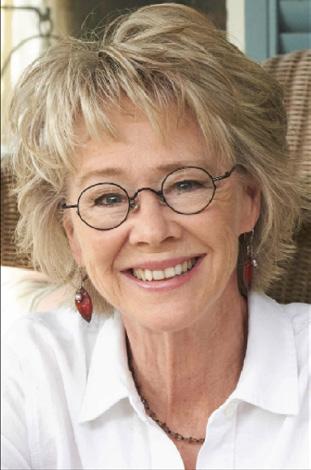
Gwenn Voelckers is the author of “Alone and Content: Inspiring, empowering essays to help divorced and widowed women feel whole and complete on their own.” She welcomes your thoughts on this column as well as topic suggestion for future essays at gvoelckers@rochester. rr.com.
I
f your child is among the youngest in their school grade, it's more likely they'll be mistakenly identi-
fied by teachers as having ADHD or autism, a new study confirms. "Adults involved in identifying
or raising concerns over a child's behavior — such as parents and teachers — may be inadvertently misattributing relative immaturity as symptoms of ADHD," explained senior study author Kapil Sayal, a professor of child and adolescent psychiatry at the University of Nottingham, in England.
"The child's age in relation to their classmates [their 'relative' age] needs to considered when making this kind of diagnosis," he said in a university news release.
It's a phenomenon that's been picked up on in prior studies. This time, Sayal's team conducted what's known as a "meta-analysis," combining the collected data on the issue from 32 studies conducted worldwide.
They found that "children who are younger relative to their peers within the same school year are 38% more likely to receive an ADHD diagnosis and 28% more likely to be prescribed ADHD medications," compared to older kids in the same class.
When it came to autism spectrum disorders (ASDs), similar trends emerged. In two "high-quality" studies conducted in Taiwan, "children who were the youngest in their school year were more likely to be diagnosed with ASD than those who were the eldest," Sayal and colleagues found.
The meta-analysis was published recently in the journal European Child & Adolescent Psychiatry.
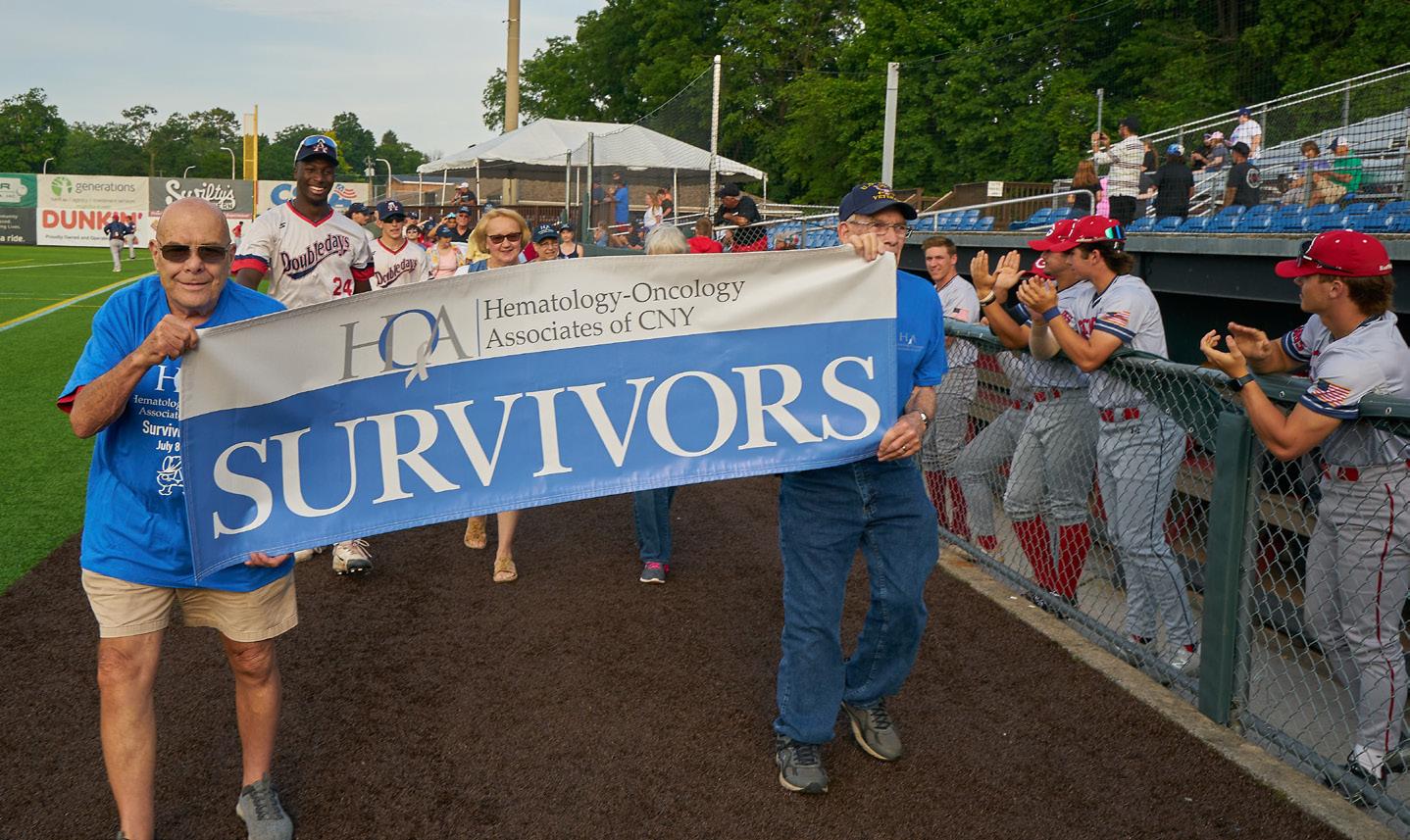
Participants in last year’s Annual Cancer Care Celebration, sponsored by Hematology-Oncology Associates.
Hematology-Oncology Associates of CNY (HOA) invites the Central New York community to a cancer care celebration with the Auburn Doubledays at 6 p.m. on Saturday, July 6, as a thankyou to its patients and the city of Auburn for their long-standing support. Free tickets to the event are available while supplies last at hoacny.com or at the HOA Auburn office at 37 W. Garden St., suite 301.
In addition to the baseball game against Geneva, the event will begin with a recognition ceremony for cancer survivors and end with a fireworks display. Open to everyone, not just cancer patients, the celebration also includes:
• The first pitch thrown by an HOA Auburn cancer survivor
• A gift for each cancer survivor in attendance
• A gift for the first 500 guests at the gate
• An opportunity to meet and talk with the HOA staff
“We look forward to this event every year,” says Maryann Roefaro, HOA’s chief executive officer. “Providing comprehensive cancer care to Auburn’s cancer patients since 2012 is our honor, and we are excited to
celebrate that with the community.”
Located at 130 Division St. in Auburn, the Doubledays stadium can seat 4,000 spectators, and offers con cessions. Gates for the July 6 event open at 6 p.m., and the game begins at 7:05 p.m. A rain date is scheduled for Saturday, July 13.
As a fully staffed, comprehensive cancer center, rather than a satel lite office, HOA Auburn has been offering Cayuga County residents patient care close to home since 2012. Located in the Health Central build ing at 37 W. Garden St., suite 301, HOA Auburn is the only local cancer care provider staffed by a full-time, board-certified medical oncologist, nurse practitioner and physician assistant.




Services provided there include intravenous medication services for cancer, blood disorders and other non-oncology conditions; medication dispensing and nutritional consult appointments, as well as social work counseling and support. Auburn patients requiring radiation therapy are scheduled at their convenience in the practice’s nearby Onondaga Hill office in Syracuse.
Crouse Health Foundation’s 7th annual Crouse Health Polo for Preemies will be held on Sunday, July 28, at the Skaneateles Polo Club, 783 Andrews Road, Skaneateles.
Pre-match festivities begin at 1 p.m. for guests to socialize and enjoy music. Family-friendly activities, raffles and chances to win will be offered throughout the afternoon with food and beverages available for purchase. The polo match will begin at 3 p.m. Proceeds from Polo for Preemies will support the care of the region’s premature and critically-ill newborns
at Crouse Health’s Baker Regional NICU. These “little fighters” receive care from a dedicated, expert staff of neonatologists, nurses and pediatric specialists at the highest level NICU in a 14-county region. General admission tickets are available for $10 at the gate. Children under 12 are free with a paid adult. Sponsorship opportunities with reserved field-side seating and included food and beverages are available by contacting Bree Amborn, breannaamborn@crouse.org or by phone at 315-470-7006.
Learn more at crouse.org/ polo2024.

Do you qualify for Medicaid?
Do you have enough $$$ set aside for your
Do you qualify to get money back in your


By Deborah Jeanne Sergeant
Afew local providers offered ideas of what’s on the forefront of women’s healthcare.
Numerous studies indicate that women’s health concerns are considered less important to their healthcare providers than men’s concerns.
One example is a study published by the Journal of Women’s Health that said women presenting with chest pain are twice as likely as men to be diagnosed with mental health issues instead of possible cardiac issues.
Women are also “substantially underrepresented” in medical research than men for issues that affect both genders, according to a study published by Harvard in 2022.
“I ask each and every woman to join me in advocating in more equitable healthcare and increase awareness, education and support for the fight of women in heart disease,” said physician Nelly Kazzaz, a board member representing the American Heart Association Western and Cen-
tral New York Chapter.
According to the AJPM Focus — the journal of the American College of Preventive Medicine and the Association for Prevention Teaching and Research —, a study of women in 2022 showed that “compared with reports before the pandemic, participants reported increased frustration or boredom (69.1%), loneliness (51.6%), anxiety (64.3%), depression (52.4%) and changed sleep patterns (68.3%).”
In addition to providing most of the home’s housekeeping duties and care giving to children and elders, women found themselves juggling working at home and while schools closed, providing more care giving and overseeing education at home. Although some of these issues have abated, others such as inflation persist.
“Since the pandemic, women have been under increased pressure at home and work,” Kazzaz said. “Instead of prioritizing mental
By Eva Briggs, MD
In this article I’ll explain some of the medications used for asthma and COPD (chronic obstructive lung disease).
Both illnesses are considered obstructive lung diseases.
This means narrowing of the small airways that interferes with the easy flow of air into and out of the lungs.
In asthma, the obstruction is reversible.
Asthma often has a strong genetic component. It’s associated with allergies and airway hyperreactivity. The obstruction in COPD is less likely to be reversible and is associated with smoking and air pollution. But there can also be a genetic component. Some inherited diseases, such as alpha-1 antitrypsin deficiency also cause COPD.
There is also an overlap syndrome where patients can have components of both asthma and COPD. Some lung diseases have symptoms that mimic these conditions
Examples include lung cancer and interstitial lung disease. Wheezing after acute infections such as COVID-19, RSV and influenza can be a sign of underlying asthma.
Classes of medicines used to treat these illnesses include:
healthcare, we reduced the priority of preventive healthcare. We are still seeing the consequences of it and we aren’t at the pre pandemic status of mental health.”
It is estimated that about 20% of the healthcare workforce left medicine during the pandemic. This affects women twofold: both in securing providers for their own healthcare needs and for those of their family, as women tend to act as the guardians of their family’s health.
“It’s very concerning and there’s no end in sight,” Kazzaz said. “Most physicians who left healthcare during the pandemic didn’t retire. The pandemic increased a load that led to early retirements and a lot of people leaving the healthcare professions. We still struggle fully staffing our office and the hospitals are struggling as well.”
“We notice a lot of patients who want weight loss,” said Vanna Reisman, women’s health nurse practitioner and certified nurse midwife at Women’s Health Horizons in Syracuse. “It’s about exercise and taking care of yourself with what you’re eating. A lot of obesity that we’ve seen in recent years was COVID-19 related. However, people are getting back on track.”
“We still haven’t seen patients come back since the pandemic until
just recently,” Reisman said. “We’re also seeing an uptick in certain kinds of cancer like breast cancer and ovarian cancer, which have screening protocols. People put that on the back burner during the pandemic.
“I think women need to be very well-informed and educated and listen to their provider. There is so much information about how often to get your Pap smear and get testing for STIs. I just think that a lot of times, they get caught up in everything that’s going on with their friends. I think that’s an important source, but I’m not the same as a healthcare provider.”
Ask your healthcare provider what’s right for you.
“We did see an upswing in STIs during the pandemic because with the available time for people to engage in risky behavior,” Reisman said. “We’re seeing people engaging in riskier sexual behavior that may have to do with dating sites. Unfortunately, we get a lot of surprises.”
The Centers for Disease Control and Prevention states that from 2014 to 2020, the fertility rate has consistently declined by 2% annually.
“Part of that is polycystic ovary syndrome, which so many women are suffering from and people are gaining weight, which has affected fertility,” Reisman said.
• SABA — short-acting beta agonists such as the commonly used medicine albuterol. These drugs relax airway muscles to allow more air to flow in and out. They usually start working quickly but wear off quickly.
• LABA — long-acting beta agonists such as formoterol. These last longer than the short acting beta agonists. Some take longer start working.
• LAMA — long-acting muscarinic antagonists, such as Ipratropium. These act via a different biochemical mechanism to open the airways.
• ICS —inhaled corticosteroids such as budesonide. Similar to prednisone, which is a steroid medicine taken by mouth; ICS deliver steroids directly to the lungs so less is absorbed by other parts of the body. This reduces side effects and adverse reactions.
When deciding which medicines to prescribe for a patient with COPD, their medical provider will need to assess the severity of the patient’s symptoms.
Minimally symptomatic patients may need only a LAMA. As symptoms worsen, COPD patients may require both a LAMA plus a LABA. And the patients with the most

severe symptoms may require triple therapy with a LAMA, LABA and an ICS. That’s why it’s important for patients with COPD to become established with a primary care provider who can assess illness severity to prescribe the best controller medicines. This reduces the chance that a COPD patient will wind up in the urgent care, emergency room, hospitalized or — worst of all — die prematurely.
For years, the mainstay of mid intermittent asthma treatment was a SABA such as albuterol as needed. But new guidelines suggest a better approach may be a LABA-ICS (such as formoterol-budesonide) combination as needed. This same medicine can be used as a single maintenance therapy.
Albuterol every 20 minutes to one hour remains the main therapy for acute exacerbations of asthma. LABA-ICS can also be used up to six times per day for quick relief. Patients may also need a short course of steroids by mouth.
These are the main medicines used to treat asthma. For patients with severe disease there are additional medicines such as omalizumab and benralizumab.
Non-medication ways to help control COPD and asthma include quitting smoking (unfortunately switching to vaping still damages your lungs), avoiding triggers and vaccinations that reduce your chances of contracting a respiratory infection (influenza, COVID-19, pneumonia vaccine and RSV for those older than 60).
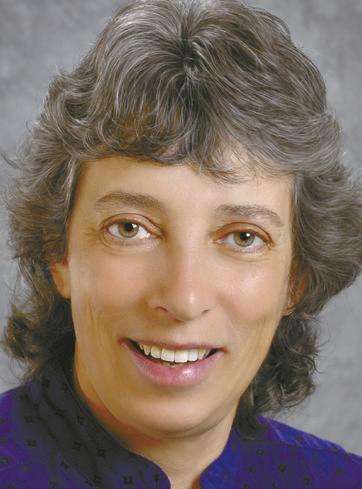
By Deborah Jeanne Sergeant
Up to 75% of menstruating women experience premenstrual syndrome, according to Healthywomen.org, a site dedicated to educating women aged 35 to 64 so they can make informed health decisions.
But only 20% to 40% encounter disruptions in their daily activities because of PMS.
The term “premenstrual syndrome” or “PMS” refers to a group of symptoms related to starting a month’s menstruation, including mood swings, anxiety, depression, change in appetite, bloating, breast sensitivity and feeling tired. This isn’t an exhaustive list; some number as many as 150 distinct symptoms. Since nearly all women menstruating have cramps while bleeding, that is not considered a PMS symptom.
Of course, over-the-counter preparations like Midol can reduce cramps and bloating and heating pads help with cramps. But preventing the symptoms from happening at all can make life easier.

“A lot of young women are going for forms of birth control like an IUD or Depo-Provera shot,” said Vanna Reisman women’s health nurse practitioner and certified nurse midwife at Women’s Health Horizons in Syracuse. “You’re not getting periods on these as it calms down the ovaries. You don’t get PMS. It’s about cycle control not just fertility control.”
Healthywomen.org offered a few

suggestions that may help, such as taking a calcium supplement of 600 mg twice daily, although it’s unclear as to why this can make a difference. Other studies show that supplementing with vitamin E, vitamin B-6 and magnesium help.
Some women report anecdotally that the supplement chasteberry helps relieve PMS symptoms.
Before taking any supplements, always discuss it with your primary care provider.
Other lifestyle modifications can also ease PMS.
“Exercise is always something to help regulate hormones, especially strength training exercise like yoga and Pilates for core work,” Reisman said. “I do encourage that because I think it does help women’s bodies maintain a certain weight and BMI. Also, strength training is so important for people. It’s hard for many people to get there but once they realize it comes down to output has to be more than input.”
Walking twice daily for 30 minutes can make a difference in becoming healthier and thereby reducing PMS symptoms. Try exercise bands, moderate free weights or body weight exercise. This may not be a good time to engage in lifting really heavy weights.
Some cardiovascular exercise can also help out, as the body releases the “feel good” hormones — endorphin and serotonin — during exercise. This helps improve mood and alleviate depression. But if you’re not
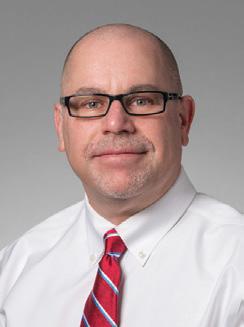


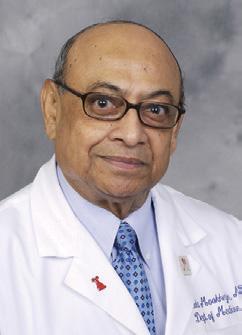








feeling up to it, try a light workout such as brisk walking, gentle yoga or Pilates or cycling.
Overall, eating a balanced diet reduces PMS symptoms. It should be low in refined foods such as snack cakes, pastries and boxed mixes and simple carbohydrates like white flour-based foods and sugar. A good diet is also rich in whole produce and grains, complex carbohydrates and lean protein sources.
Ironically, many women experience PMS-related food cravings for foods that aggravate their symptoms, such as chocolate or other sweets and caffeine, but it’s better to reduce these. Herbal tea may help ease symptoms. Most is caffeine-free. Look for preparations billed to reduce PMS.
Reduce sodium and increase water intake to prevent bloating. Avoid nicotine altogether.
As stated above, regular exercise is important. Aim for 150 minutes of moderate exercise weekly.
Women who experience severe depressive symptoms — not just a bout of low mood for a day — should seek help from a healthcare provider. This could signal premenstrual dysphoric disorder (PMDD), a rare disorder that causes more significant mood symptoms and more pronounced PMS symptoms. Care providers may prescribe antidepressants.





Losing weight isn’t easy, but these mistakes make it much harder
By Deborah Jeanne Sergeant
Trying to lose weight? Make it easier by avoiding these common pitfalls:
• “Eating too little. Too few calories can lower metabolism and lead to excess muscle loss. It can also make a diet unsustainable. Make sure you are still eating balanced meals and include favorite foods in smaller portions. A mild calorie deficit is more conducive to slow steady fat loss and more likely to be sustainable.
• “Skipping meals or eating very little during the day in order to ‘save’ calories often backfires and can lead to extreme hunger and cravings in the evening. The foods eaten in the evening hours are often more caloric and provide less nutrients than a well-balanced breakfast.
• “Not recognizing the contribution of liquid calories. Sweetened coffee drinks, soda, sweetened tea, lemonade and many purchased smoothies contain a large amount of added sugars and can add a lot of extra calories to the diet. Liquid calories provide a double whammy because they raise blood sugar very quickly and do not provide a high degree of satiety —prolonged fullness. This can lead to feeling hungry again a short time later.
• Over-exercising. In the grand scheme of things managing food intake is a bigger contributor to weight loss than exercise. While exercise is important to preserve lean tissue, help manage stress and maintain cardiovascular fitness, it rarely burns enough calories to produce significant weight loss. Intense exercise can be uncomfortable leading to extreme soreness and inflammation, which can cause the scales to go up and can be hard to maintain. Many people find high intensity workouts fatiguing over time and difficult to stick with.
• Moderate exercise, done consistently, is more impactful to overall health and helps to support weight loss and weight maintenance.”
— Kimberly Higgins, registered dietitian nutritionist and owner of Kimberly Higgins Food & Nutrition in Syracuse
• “People underestimate their caloric intake and should keep a food log.
• “They don’t count calories they drink.
• “Try to be too strict with diet habits.
• “Bariatric surgery patients tend to rely too heavily on the surgery to


curtail their appetite. They still need to be careful with what and how much they intake and exercise.”
— Physician Jeffrey DeSimone, Center for Weight Loss & Surgery at Oswego Health
• “Typically, people want to lose weight very quickly which has been proven difficult to maintain that weight loss. Losing weight at around one or two pounds per week is more sustainable to maintain and keep off in the long run.
• “Choose a lifestyle plan that you can maintain for life and that is not so restrictive. Listen to what is right for you as not all plans fit everyone.
• “When one has hit their goal weight, know that doesn’t mean you can go back to the ways you were eating and living and maintain your weight. Maintenance takes diligence as well. Continue monitoring your
eating and exercise plan.”
— Laurel Sterling, registered dietitian with Carlson Labs in Canastota
• “Not being aware of serving sizes. Read labels and use measuring utensils periodically to check serving sizes.
• “Mindless eating. Keep a food journal.
• “Not incorporating more movement/activity/exercise into your day. Aim for at least 150 minutes daily. And don’t forget strength training.
• Being too restrictive. Include all food groups.
• Not drinking enough water.
• “Not making realistic goals: losing one or two pounds a week is safe and reasonable.”
— Julie Mellen registered dietitian nutritionist at Upstate Medical University
She is expected to become Aurora of CNY’s executive director next year. The organization serves the blind and visually impaired, deaf and partially deaf populations. She talks about her plans for the nonprofit
By Mary Beth Roach
Kate Weidman is currently the deputy executive director at Aurora of CNY, which provides services to the blind and visually impaired, deaf and partially deaf populations in Central New York. She will take over the executive director in February 2025, when Debra Chaiken resigns.
Q: You’re going to be taking over in February. What do you believe you will bring to this new position?
A: I originally was on the board of Aurora, and I learned that this organization is so great. Knowing the depth of the services, knowing how
many services we provide, knowing all the lives that we touch — what I bring is the passion for the people we serve and my drive to better our community. I really want to make sure that at the end of the day, I am creating a more inclusive community.
Q: What do you envision for the future for the organization? What do you want to achieve or accomplish as executive director?
A: Aurora has been around for over 100 years, and I would want Aurora to stay around for another 100 years. I want Aurora to still be a positive force in the community to
serve our folks that are blind, visually impaired, deaf and hard of hearing. That’s really my main mission.
For me to say that I envision this going somewhere, it wouldn’t do the community justice, because it really should be those folks driving what services we provide as an organization.
Q: I’ve noticed on Aurora’s website that the organization collaborates with a good number of other community-based groups to offer services. Do you anticipate more collaborations?
A:. I do anticipate a lot of partnerships in the future. We all have our different specialties, and we can never do it alone. So, we are going to be partnering with a lot of organizations to ensure that we’re meeting the needs of the community. People are multifaceted. They don’t just need one service. They need services, whether it’s primary care, mental health, services to help them stay in the home. We are going to be collaborating to ensure that the entire person is taken care of.
Q: In the months while you’re still the deputy executive director, how are you preparing for this next chapter?
A: I am learning everything I can — the different organizations in the community, the different resources and getting to know staff, getting input from, not only our staff, but our consumers, our stakeholders and the community. Everyone has such wonderful viewpoints and ideas, and it would be a disservice not to take those into consideration and learn from them. I’m afforded the opportunity to learn. Deb isn’t retiring until February, so I can learn from her.
Q: How many people does the organization serve?
A: We provide about 1,200 services per year, and many times folks receive multiple services from Aurora. That is just the tip of the iceberg because we do a lot of community engagement, as well, including outreach.
For the blind and visually impaired, we provide orientation and mobility services, which help individuals develop or relearn skills and concepts that help them remain safely in the home. We do vision rehab therapy. We have support groups for our blind consumers. We do children’s socialization programs. We provide social work for individuals who are blind and visually impaired. We have pre vocational skills training for youth, ages 14 to 21. We also have work readiness. For the blind and visually impaired, we have a program through the VA, where we operate their switchboard.
We also have services for the deaf and hard of hearing. We have deaf employment services, so we have support, employment and placement. We have our wonderful Children’s Hearing Aid Program, which we call CHAP. We have our social work services as well. We also do community education. We have pre vocational training as well for youth ages 14 to 21, and we do provide interpreter services. We contract with interpreters in the community. I feel we are a small but mighty nonprofit organization in the community.
Q: What is your service area geographically?
A: We cover Cayuga, Onondaga and Oswego counties.
As specialists in women’s healthcare, we pride ourselves on providing the latest services and procedures - personalized to help you thrive. We deliver high quality healthcare from prenatal to senior health to meet your needs at any age.
Amy MacDonald, MD • Tanya Paul, MD


By Deborah Jeanne Sergeant

Although the pink ribbon campaigns to raise funds and awareness for breast cancer are important, heart disease represents the disease that kills more women annually than any other disease.
One reason for heart disease death prevalence among women is that even healthcare policy influencers tended to focus more on men’s heart health to the neglect of women’s heart health.
“Even in not-very-distant history, even the American Heart Association addressed women as to how to help their husbands’ hearts,” said physician Nelly Kazzaz, a board member representing the Western and Central New York chapter of the American Health Association.
The medical community has focused so much on women’s health such as lowering childbirth-related deaths and other reproductive issues that heart disease has not been as studied and researched.
When women were included in heart disease research, “the research did not have enough women to apply it. Now we know the differences and have more women involved in the research and can apply the different treatments and diagnostics,” said Kazzaz.
One reason that women weren’t historically as studied in medical research is that fluctuating hormones from monthly cycles, childbearing and menopause were viewed as effects skewing studies’ results. But recent attention on heart disease among women has pushed for more study in this area.
In addition, “there’s lack of awareness among patients them-
selves,” Kazzaz said.
Women haven’t asked about heart health, perhaps in part because men’s heart health has received so much attention.
That awareness extends to providers as well, Kazzaz added, since women can present with atypical symptoms.
“Women tend to talk about all other issues and not on the symptoms,” Kazzaz said. “They describe it differently to their providers than men. They say, ‘I was attending a wedding, wearing this dress, and they had these flowers, and then was short of breath.’ That might affect how healthcare providers pay attention to their symptoms.”
She added that providers may skip over the pertinent parts of the narrative when discussing health crises with women. Or miss the importance of symptoms that differ from men’s symptoms.
“Many of my patients walk in and say, ‘It’s probably anxiety’ which it might be, but give us the chance to rule it out,” Kazzaz said. “They don’t want to be judged. I’m not saying it’s not a real health issue that needs to be addressed, but they think that if it is anxiety, they’ve wasted my time.”
She assures patients that “false alarms” waste no one’s time. Providers can also use these moments for patent education on topics such as how heart attack presents in women.
“We classically think of chest pain and shortness of breath as the hallmarks of heart attacks, but women can present differently,” said physician Amanda Congiglio, who works at Rochester Regional Health. “If someone doesn’t feel normal, they should be assessed.”
She noted that because so many people rely on women, such as their spouses, children, senior parents and employers, women may feel stoic to
push through symptoms like dizziness, flu-like symptoms, and jaw pain.
To reduce their risk of heart disease, women should follow these steps.

• “Be aware of your risk and know your numbers: blood pressure, cholesterol, blood sugar and ideal, healthy weight.
• “Weight, blood pressure, blood sugar, cholesterol, activity level, smoking and sleeping we can change to reduce the risk.
• “In some people, we can start with ‘and if we can’t achieve that, we can look at medication.’ We are trying very hard to catch these patients as young as possible in their child bearing age. Maternal healthcare is a big concern in healthcare with hypertension, diabetes, preeclampsia or eclampsia during pregnancy. OB-GYNs may see indicators. The patient may need referral to a cardiologist.”
— From physician Nelly Kazzaz, board member representing the Western and Central New York chapter of the American Health Association.
• “Don’t smoke. That’s the biggest thing.
• “Get 150 minutes of aerobic exercise a week. Walking is a great
way to exercise, and some weightlifting, which is also good for preventing osteoporosis.
• “Eat a healthful diet.
• “People struggling with obesity should reach out to their primary care provider to get started on medicines that help with weight loss.
• “If you have high cholesterol or have diabetes, keep it well-managed.”
— From physician Amanda Congiglio, Rochester Regional Health.
• “A lot of people think, ‘I have to devote an hour of time to exercise.’ And it feels like work. It’s uncomfortable. But they can take a 30-minute walk at lunch and take another 30-minute walk after lunch. If you look at it as a chore, it’s hard to do. There are a lot of things you can do during the course of the day that change the way you see exercise.” People respond to that. They understand we’re busy people. Sometimes, it is easier to use your day as your source of exercise as opposed to fighting it.
— From Vanna Reisman women’s health nurse practitioner and certified nurse midwife.

Pelvic floor physical therapy can support urinary continence
By Deborah Jeanne Sergeant
If you have never heard of pelvic floor physical therapy for improving urinary continence, you’re not alone.
“People do not know much about pelvic floor physical therapy,” said Schweta Singh, physical therapist at Robert Berkley Physical Therapy in Oswego. “Many don’t know what it is.”
Urinary incontinence can result after surgery, trauma to the area’s tissues, bladder irritation, childbirth or prolonged bedrest and deconditioning. But it doesn’t have to be a lifelong problem. Whether urge incontinence (always feeling the need to urinate), stress incontinence (leaking when lifting objects, sneezing or laughing) or a combination of those, pelvic floor physical therapy can help.
Patients can often see improvement within two to three weeks if they follow their provider’s protocol for home exercises between visits. Their number of accidents goes down and they’re not rushing to the bathroom anymore. They can cough and sneeze without needing to excuse themselves.
At this point, “They realize that if they continue therapy, they’ll be OK,” Singh said.
In about four to six weeks, many
achieve significant results, although some take longer.
Singh said that some women continually use the bathroom “just in case” and inadvertently train their bladders to need emptying at half full. But waiting to urinate is not the best idea in all cases.
“You can try to wait a little bit longer between when you first have the urge, like waiting five minutes and eventually waiting longer,” she said. “There’s a fine line between not voiding that often. They need a normal pattern.”
Another common misconception is that advanced age means urinary incontinence is inevitable. But Singh has seen patients in their 80s improve.
After taking a patient’s medical history, a physical therapist can better understand how and why the patient is experiencing incontinence. A therapist may look at posture and breathing and if any specific action causes leakage, such as rising from a chair.
An exam also includes assessing muscle strength and, if the patient assents, an internal exam of the pelvic muscles, which can help better understand what’s going on.
Patients should avoid bladder irritants, such as caffeine, processed

foods and cigarettes.
The results of pelvic floor physical therapy last, especially if the patient performs any exercises prescribed a few times a week to maintain their progress.
Some people believe that performing Kegel exercises is the answer. However, Tania Gardner doctorate in physical therapy working in Pelvic Rehabilitation at Upstate Physical Medicine and Rehabilitation, said that many different things can cause leaks beyond weak pelvic floor muscles.
“Sometimes the leakage is a result of pelvic floor muscle weakness, having pelvic floor muscles that are too tight, or muscles that aren’t coordinated, not doing the right job at the right time,” she said. “Pelvic floor physical therapists can assess how a patient’s pelvic floor muscles are working and develop a treatment plan to improve muscle function. They also provide education on healthy bladder and bowel habits as well as strategies to reduce urine leakage. If the physical therapist suspects the urinary incontinence is due to something other than pelvic floor dysfunction, the patient will be referred back to his or her physician for further evaluation.”
Some people have urge incontinence, where they feel the need to urinate frequently and instantly. Others have stress incontinence, where straining to do something else like picking up a heavy box or sneezing can cause leaks. Still others experience both types.
Therapists may use manual therapy, biofeedback and exercise to improve muscle function. Instead of assuming surgery is the first way to

Q. Who are we?
treat incontinence, physical therapy can offer conservative management of urinary leaks.
Jeanne Cioci, physical therapist at Apollo Physical Therapy in Oswego, who is certified in pelvic floor physical therapy through the American Physical Therapy Association, views the process as a progression from gaining control of urinary contractions to achieving control regardless of activity.
In addition, “there’s a lot of education for patients about the pelvic floor,” Cioci said. “It involves bladder habits, normal functioning, the fluid intake and behavioral changes.”
Cioci added that proactively addressing pelvic floor issues before surgery or childbirth can lead to a better outcome with urinary continence after surgery.
Once a patient has reached a status of urinary control, they can often maintain the positive results through home exercises.
“Like any body part, if you get it better and ignore it, you have potential to have it return,” she said. “You should still do some of the exercise some of the time. I tell patients that right now, you’re in the thick of training doing these exercises every day. If you’re not leaking, you can back it down. Do some every day or do it every other day. You still need to keep the brain-nerve-muscle connection and keep the muscle engaged.”
New York is an open-access state for physical therapy, meaning that most health insurance that covers physical therapy will not require a physician’s referral to cover a limited number of visits.
A. We are a therapist-run pediatric therapy clinic. Our passion is working with children and we provide fun, positive, and compassionate care in a warm and welcoming environment. Our team of skilled and friendly therapists is dedicated to providing the resources, tools, and techniques you need to achieve your goals.
Q. What services do we offer?
A. We currently offer pediatric physical therapy services for children from birth to 21 years old. We are going to be expanding in the future to offer pediatric occupational and speech therapy services. We also offer play-based and movement group classes focusing on exercise, development, and fun for children of all ages.
Q. Who do we see?
A. We treat children from birth to
age 21. We see a wide range of diagnoses including but not limited to developmental delay, toe walking, orthopedic injuries, autism spectrum disorder, torticollis, pain, concussion, vestibular rehab, and genetic or neurological conditions such as Down syndrome and cerebral palsy. We will also work on any concerns you may have with your child’s strength, mobility, balance, coordination, tone, or overall motor skills. We offer individualized approaches and our therapy is designed to be both effective and fun!
Q. How does it work?
A. Your first visit with us would be an evaluation where we assess your child’s current level and discuss your concerns. We would then develop a treatment plan working toward your goals, and schedule ongoing appointments for treatment sessions.
By Anne Palumbo
Even though Americans eat more potatoes than any other vegetable, a good many of us don’t.
Worried about carbs and calories, we shun this tasty tuber.
Assuming we’re not missing anything anyway, we sail by these perceived starch bombs in the grocery store.

Years ago, I too was a spud-shunner. But then I did some digging and, much to my surprise, discovered multiple studies that linked potatoes and their nutrients to a variety of desirable perks.
Let’s begin with starch. Although potatoes don’t contain as much starch as flours, baked goods or cereals, they do contain more starch than other vegetables. However, unlike the refined starch in processed goods that causes blood sugar to spike and then drop, a potato’s “resistant starch” is not broken down and fully absorbed by the body. Instead, it feeds the “good” bacteria in your gut. Research has linked resistant starch to numerous health benefits, including better blood sugar control and improved gut health.
Red, white or purple, this popular vegetable is surprisingly rich in nutrients.
One serving provides decent amounts of brain-boosting vitamin B6, constipation-preventing fiber, and bone-strengthening manganese. The biggest surprise of all? Potatoes are an excellent source of vitamin C and potassium. A powerful antioxidant that protects cells from disease-forming free radicals, vitamin C supports
the immune system and helps form collagen. Potassium, on the other hand, is a mineral that’s essential for heart health and plays a role in every heartbeat.
Potatoes are packed with antioxidants, compounds that neutralize potentially harmful molecules known as free radicals. When free radicals accumulate, they can increase the risk of chronic diseases like diabetes, heart disease, and cancer. Since the skin of colorful varieties like red and purple potatoes can have up to 12 times more antioxidants than the flesh, I gravitate to those.
Potatoes are quite filling, which means they may help you regulate or lose weight by curbing hunger pangs. Undoctored and simply boiled or roasted, potatoes are not that caloric: 110 calories per average serving. Deep-fry them in oil or smother them with the works, however, and this healthy spud quickly becomes a nutritional dud.

Anne Palumbo is a lifestyle columnist, food guru, and seasoned cook, who has perfected the art of preparing nutritious, calorie-conscious dishes. She is hungry for your questions and comments about SmartBites, so be in touch with Anne at avpalumbo@aol.com.
According to the Social Security Administration (SSA), the most popular baby names for 2023 were Olivia and Liam, for the fifth and seventh year in a row, respectively
Also, for the fifth consecutive year, Noah took the second slot for boys, and Emma for girls. Only one new name appeared in the Top 10 lists this year, with Mateo joining the boys for the first time.
Social media stars had a major influence on new parents in 2023.
The fastest rising girl’s name, Kaeli, went viral in 2023, rising a whopping 1,692 spots. Parents must have really smashed the ‘like’ button for YouTube and TikTok star Kaeli McEwen (also known as Kaile Mae), who routinely promotes a clean, tidy,

2 tablespoons spicy mustard
1. Make potatoes: Preheat oven to 400 F. Cut the potatoes in half (quarters if large) and place in a bowl. Toss with a little oil, salt, and pepper and then arrange, cut-side down, on a rimmed baking sheet. Roast in the oven for 45 to 50 minutes until tender when pierced with a fork and golden brown. Transfer to a large bowl.
2. Prep pepper and beans: While potatoes are cooking, cook beans until tender-crisp by steaming or microwaving. When cool, slice into 1½-inch pieces and add to the potatoes. Cut the pepper into sticks
Select firm potatoes, minus sprouts and cuts. Remove any green spots in skin or eyes. If your potato is green in more than a few spots, it’s better to toss as cooking doesn’t get rid of the toxins. Properly stored in a cool, dark place— away from onions which expedite spoiling—most potatoes last about a month.
about the same width and length as the beans and place in the bowl, along with the slivered red onion.
3. Make dressing: Stir together mustard, vinegar, garlic, salt, and pepper in a small bowl. Drizzle in the oil, whisking constantly to make a creamy dressing. Add a few dashes of Tabasco to boost flavor.
4. Mix it all up: Add dressing (some or all) to vegetables, give it a good stir, and serve. Note: leftover dressing tastes great on meat and meat alternatives.
and neutral-aesthetic lifestyle. On the boy’s side, trending in third place as the boy’s fastest riser, is Eiden — perhaps it was TikTok creator Wyatt Eiden’s 1.6 billion views and over 3 million followers that prompted this name’s meteoric rise.
Powerful names also proved very attractive to parents in 2023. Emryn made her debut in the Top 1000 baby names after moving up 1,287 spots — Ryn translates to “ruler,” so it is no shock to see Emryn becoming a leader amongst the girls. Meanwhile Chozen, the second fastest rising boy’s name, fought up to number 813 in 2023. The character Chozen becomes a hero in the latest season of the hit Netflix show, Cobra Kai – wax on, wax off!
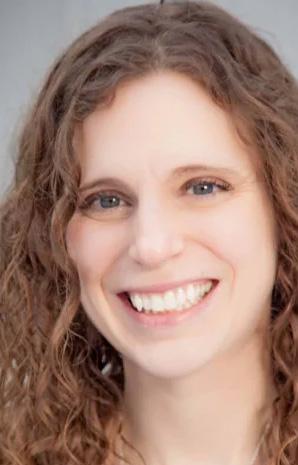
By Melissa Stefanec MelissaStefanec@yahoo.com
y daughter is entering her last year of middle school and she and her friends are navigating some difficult situations. They are years from being adults and yet often forced to navigate adult topics and obstacles.
Middle school is as tough as it’s ever been and my daughter is developing the skills she needs to make it through.
As her official middle school drama coach, I want her to find her own voice and embrace problem-solving. But I have to play adviser, too. So, I thought I would share some of the advice I’m selectively sharing with her as she stares down the middle-school gauntlet.
Don’t believe everything you hear
Every time someone spreads a rumor, it loses a little truth — if it had any to begin with. Unless you saw something happen or heard something said, you don’t know the information you’re told is true. The people who know what’s true aren’t usually the ones doing the talking.
What you hear and see is half of the story
Even if you do see or hear something that seems very clear cut,
remember there is more to the story. You didn’t see what happened in the locker room or hallway before an incident. You didn’t see the social media message last night. What is out in the open is only part of a bigger story.
People are mean because of pain and frustration inside of them. When you find a mean person, that person likely has a lot of mean people in their own life. Meanies say a lot about themselves and very little about the people whom they are mean to.
much as possible, stay out of it
It’s so hard to stay out of conflicts, especially when someone you care about has been harmed. But, as much as possible, stay out of other people’s drama. You can be a good and supportive friend without being part of the battle. When a situation doesn’t directly involve you, you don’t need to engage with people or police them.
But, when someone is danger, intervene
As much as you should avoid meddling, there are times you have to stand up for yourself or someone you care about. In those situations, please get involved. Go to the school counselor or principal. Say the unpopular thing. Stand beside the person who needs help. Your good character is one of the greatest possessions you will ever own.
You too will do regrettable things, so learn how to apologize
Even though you have such a strong character, you will make mistakes. You will do or say something regrettable or hurtful. You’re a human who is learning to navigate very difficult situations. When you mess up, be accountable. Don’t be afraid to apologize. Show folks you are worthy of forgiveness. Most importantly, learn to forgive yourself.
Don’t let someone’s mistakes define them
When someone does or says something hurtful, you don’t need to stop being friends with them. A few minor mistakes or missteps shouldn’t make someone dead to you. If we all operated that way, we would never have love or friendship in our adult lives. Learn how to forgive and let people make amends.
Be very wary of negative patterns
Forgiveness is so important, but you shouldn’t stand for repeated bad behavior. When someone repeatedly engages in negative behavior, that is a pattern. Don’t give a lot of your time to folks with negative patterns. It’s OK to show them basic respect and kindness though.
• Don’t decide if someone is your type until you know them Find your tribe, but know your friends will change throughout life. If you put in the work and choose
well, you might have some lifelong friends. But, many friends come and go and that’s OK. Engage with people who aren’t in your group. One of those people might be the lifelong friend you are looking for.
Kindness to yourself, to others, to teachers and staff, to kids younger than you, to coaches, to the planet, to animals. All of these kindnesses matter. Try your best to make them matter to you. Look for people who hold these same values. If someone is kind to you, but unkind to someone else, your day will come and it will hurt.
Kindness matters more than anything in the world. But there will be times when you have to breathe fire. You may have to say dangerous things. You may have to use physical force. You may need to do scary things to escape bad situations. When those days come, I’ve got your back. When it gets scary, I’m here
Every single time. Call me at 2 a.m. from the sleep over. Tell me the terrible thing that happened. Tell me the secret you are supposed to die with. You won’t share everything, but know I can handle anything you tell me. I promise to love you anyway. I know my daughter won’t be able to understand this slew of contradictory lectures. Even as a middle-aged woman, I can barely muster the grit and strength to abide by half of these. But, one of the reasons most of us have kids is to make the world a better place than what we were born into.
As a middle-school drama coach, I have the utmost faith in my team and her ability to change the world.


By Joe Sarnicola
Horse or equine therapy has a documented history dating back almost twenty-five hundred years. But its modern history as a rehabilitative practice may have begun in the 1950s.
In 1952, Liz Hartel won a silver medal in horseback riding at the Olympics, even though she was partially paralyzed from polio. Her interaction with her horse and her ability to overcome her disabilities caught the attention of medical professionals.
Therapeutic riding soon became a new tool to help people with a ride
range of physical and mental disabilities, first in Europe and then in the United States.
In 1969 the North American Riding for the Handicapped Association was founded. It is now known as the Professional Association of Therapeutic Horsemanship International or PATH, with more than 6,000 members.
Proof of the success of equine therapy can be found in the Central New York region at Healing H’Arts Equestrian Center in Union Springs, Gentle Hill Farms in Tully and ARISE at the Farm in Chittenango.
Madison County Public Health partnered with ARISE at the Farm to create a communication board at the inclusive and accessible playground in Chittenango.
A communication board is a tool that can help non speaking people communicate with others.
Communication boards display a selection of photos or symbols to help people with limited language skills express themselves.
The communication board tailored for this playground displays the alphabet, numbers, greetings,
On a sunny day in May, a group from Unity House of Cayuga County visited Healing H’Arts. Unity House provides services and support for people who are in recovery, coping with a mental illness or diagnosed with a developmental disability.
They were met by Kirsta Malone, the CEO of the organization, and members of her staff and volunteers.
Mary Ellen Perry, the president of the Healing H’Arts board, was also on hand when the clients arrived.
“It’s so important to get these individuals out in the public and the community so they are not just stuck at home,” she said.
The group was led into the arena, a space inside a large barn for games and other activities. Many of the game pieces were oversized such as giant stackable checkers.
“We like to supersize all our games. My background is occupational therapy, which gave me a better grasp of the developmental stages people go through. My philosophy is play and this all-inclusive program encompasses any type of need. Mental health has been a strong focus lately,” Malone explained.
The barn was built in 2017 and the footing material (interior riding surface) is made of silica sand and synthetic fibers coated in a specialized wax which was purchased from IGK Equestrian in Auburn. This makes the product dust free and requires only minimal maintenance. Malone described it as her “$40,000 carpet.”
Among the volunteers are six Mennonite teen girls. “They wanted horse experience, which allows me to teach them that horses are valued members of our team, rather than just a means for transportation,” Malone said.
The animal team at Healing H’Arts is made of 11 horses, a donkey and two dogs. All the horses are accessible to the clients. Sassy, a 28-year-old pony, was the first therapy animal in the stable. Malone started by taking her on visits to schools. She recounted a story where she worked with a teen boy who had a traumatic brain injury.
“I was flabbergasted by the positive change in him. After he graduated, I was disappointed there were no programs available to him. Even so, he is now living independently,” she said.
That experience inspired her to create a horse therapy program that eventually became Healing H’Arts, a nonprofit organization that does not board any horses as a revenue source. All their money comes from
Proof of the success of equine therapy can be found at several organizations in the Central New York region.
donations. When they were deciding on a name for the organization, they wanted one that reflected their devotion to therapy, compassion and the arts. They are also seeking a PATH -certified therapist who would be a good fit for their mission.
• For more information about Healing H’Arts, 1131 Kings Corners Road, Union Springs, visit www.healingharts.com or call 315-730-4339.
ARISE at the Farm in Chittenango is a 77-acre working horse farm that serves individuals with disabilities in the Central New York region, ranging from therapeutic horse riding to school-break programming. They even have an accessible fishing pond and playground. They recently ran a series called the Memory Care Corral, which is an equine assisted program for individuals with memory loss and their caregivers. According to Rebecca Schafer, the inclusive recreation coordinator, “The program has been going well and we will offer it again in the fall. We also offer adaptive riding.”
• For more information about ARISE at the Farm, 1972 New Boston St, Chittenango, call 315-687-6727, visit www. ariseinc.org/services or email Rebecca. schafer@ariseinc.org
From the Ground Up, a service of Gentle Hill Farm, 1238 North Road, Tully, describes their equine therapy program as “holistic,” with the belief that equine assisted services can help individuals improve balance, coordination, focus, memory, impulse control and more.
• For more information about this program call 315-238-7014, visit ww.ftguhorses.org, or email contactftgu@gmail.com
gestures, activities, emotions and playground and farm-related pictures.
The communication board is funded by the New York State Department of Health’s Children and Youth with Special Health Care Needs grant.
The board located in the accessible playground at ARISE at the Farm was donated by the Madison County Children and Youth with Special Health Care Needs program, which offers support to children from birth through age 21 and their families.

CYSHCN staff can provide information and assist with information and referrals for families of children with disabilities and/or suspected disabilities.
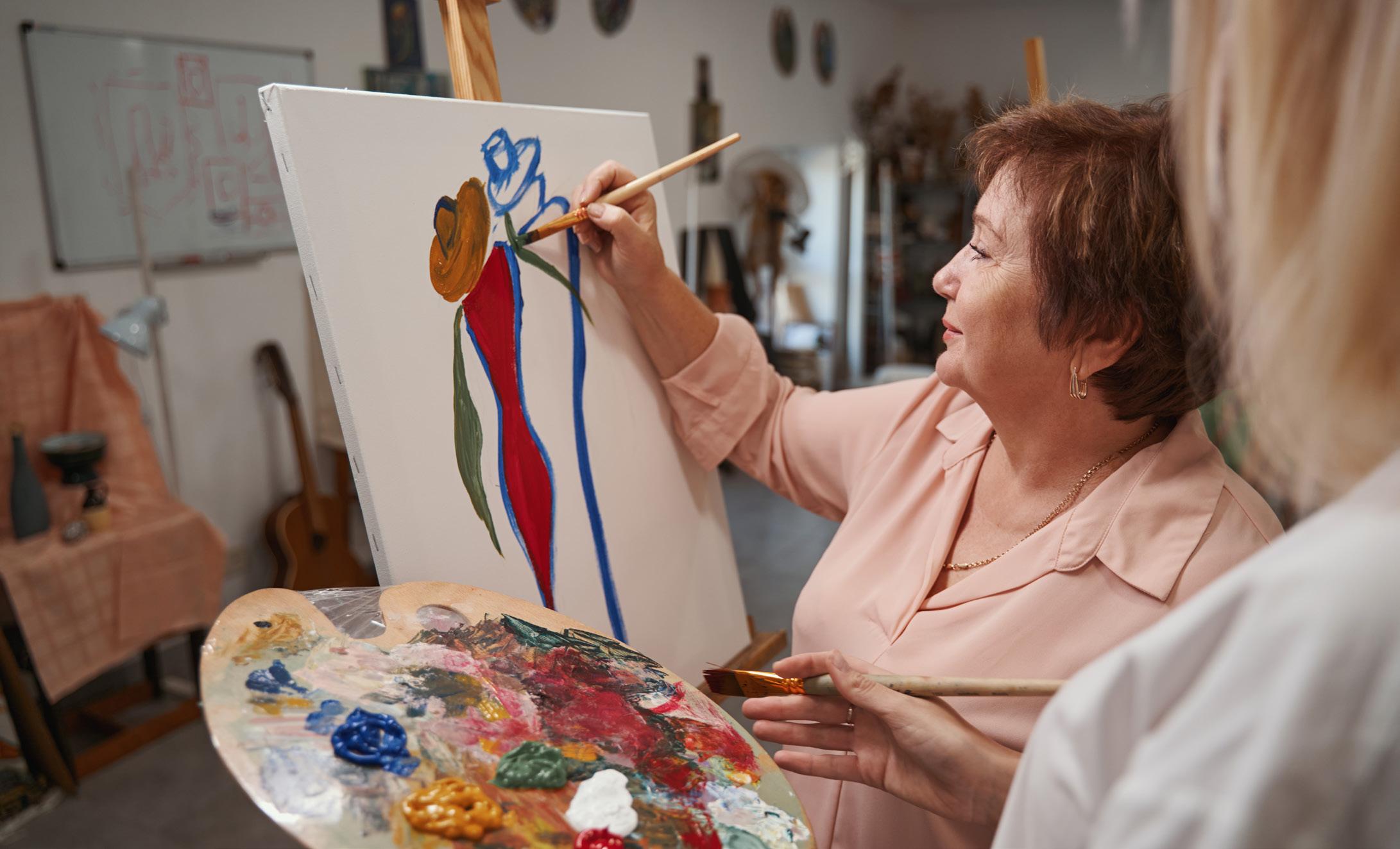
By Deborah Jeanne Sergeant
You may associate art therapy with children using crayons in a therapeutic setting. But art therapy can include different media and all ages.
At Upstate Golisano Children’s Hospital, Clare Arezina, music therapist, said that music and art help with supporting memory, lifting mood and lessening pain.
“Engagement in the creative arts is an effective option,” she said. “The arts can make us feel good. Music in particular is processed in the brain in a number of areas that stimulate memory and mood: the thalamus, amygdala and the cingulate gyrus. This means that music listening can lower blood pressure, enhance relax-
ation response and increase feelings of wellbeing.”
The areas of the brain that are involved with making music involve the motor and language centers in the cortex. That’s why playing music and singing have been shown to improve mood and memory.
“While pain is a complex phenomenon, music and the arts can have a positive impact on many of the factors that impact pain perception — mood, muscle tension, stress response and attention,” Arezina said. “Engagement in the arts is a multisensory experience — more than one sense is involved at a time — and this can make the arts particularly helpful as an alternate engage-
Free service is available 24/7 and provides access to trained crisis counselors through call, text, and chat
In times of emotional distress and mental health crises, having immediate access to support can be a lifesaver.
The 988 Suicide & Crisis Lifeline is a significant step forward in providing that crucial support. This easy-to-remember three-digit number offers immediate assistance to those experiencing mental health challenges, emotional distress or substance use issues.
The 988 Lifeline is a free service available 24/7, providing access to trained crisis counselors through call, text, and chat. It supports individuals who are suicidal, experiencing a mental health or substance use crisis, or any emotional distress. This service is also available to those
concerned about someone in need of crisis support.
One of the key strengths of the 988 Lifeline is its integration with local crisis centers, ensuring that callers receive relevant and effective support. In Central New York, Contact Community Services plays a pivotal role in supporting the 988 Lifeline, providing comprehensive crisis intervention services to ensure that individuals receive timely and appropriate care.
Since its inception, 988 has answered over 25,000 calls across Central New York, demonstrating the high demand for mental health services in our region. Each call represents a person reaching out for help, a life potentially saved. The
ment, which may help some patients with pain perceive their pain less.”
Patients painting a picture can smell the paint, feel the brush and see the colors before them on the canvas. The multisensory activity can be very grounding as well as distracting from pain. Taking pleasure in the process also releases “feel good” hormones that can dull pain.
“As with any treatment, effectiveness varies person to person, but there are a number of studies that demonstrate good effect of music therapy and the creative arts therapies for a variety of needs, from stroke rehabilitation to support during oncology treatments to social isolation and memory support,” Arezina said.
Art can help patients feel more connected to humanity as a whole. Every culture in the world creates art for many reasons. Identifying as a small part of a much larger group generates a sense of comfort and wholeness.
“The arts have been a way to share a collective experience throughout human history — to connect with
volume of calls highlights the importance of having a dedicated mental health hotline and underscores the critical need for such services. Notably, less than 1% of the calls required police assistance, emphasizing the effectiveness of trained counselors in de-escalating situations.
The service is inclusive, open to individuals of all ages, genders, ethnicities, races, religions, sexual orientations and socioeconomic statuses. Specialized lines are available for veterans, LGBTQIA+ individuals, and Spanish speakers. Phone services are provided in English and Spanish, with translation available in over 150 additional languages. Chat and text services are currently available only in English.
When you contact 988, you are connected to a local crisis center based on your area code. If the local center is busy, your call will be redirected to a national backup center. Trained counselors provide support for various mental health issues, including suicidal thoughts, mental health or substance use crises, and emotional distress. The service is

other people, to understand their perspective and to mutually engage in a meaningful way,” Arezina said. “There are helpful uses of music and the arts that nearly any well adult can access on their own. Many people report a change in mood when attending a concert, listening to a favorite song, using a relaxation track with background music, singing in a choir, engaging in a painting workshop or using an adult coloring book, to name just a few.”
Self-directed music and art activities can help manage stress; however, they have limits. A creative arts therapist can help make the activities treatment-oriented, similar to working out with an exercise versus working out with a physical therapist. The trained professional can more accurately address specific needs.
“Working with a therapist, you can set goals for your treatment and identify ways that you may be able to use creative arts in a targeted way for your symptom management,” Arezina said. “For many people with pain, depression and memory issues, the motivation to get started and stick with a new treatment can be a stumbling block.
“A therapeutic relationship with a skilled clinician is essential for many folks addressing serious health issues. Working with a trained professional may be particularly helpful in identifying opportunities for engagement in a new activity and growth over time.”
designed to be accessible to everyone, regardless of their background or circumstances.
Mental health issues have become increasingly prevalent, especially following the COVID-19 pandemic. The isolation, stress, and uncertainty of the past few years have significantly impacted many people’s mental well-being. The 988 Lifeline provides a crucial resource for those struggling to cope, aiming to reduce the stigma around seeking help for mental health issues and encouraging individuals to reach out when they need it most.
The 988 Suicide & Crisis Lifeline is a vital advancement in mental health support. With the backing of local organizations like Contact Community Services, it ensures that anyone experiencing a mental health crisis has immediate access to help. Remember, help is just three digits away. If you or someone you know is struggling, don’t hesitate to reach out to 988 or chat online at 988lifeline.org because no one should have to face a crisis alone.

Trying to lose weight? Here’s how you can lighten up your summer beverages
By Deborah Jeanne Sergeant
Seeking summer refreshment?
Sugary lemonade and soda are packed with calories. And the artificially sweetened alternatives? They’re not much better.
Numerous studies have discovered a correlation between regularly using artificial sweeteners resulted in weight gain, not weight loss as anticipated.
“They can be a lot of calories,” said physician Jeffrey DeSimone, affiliated with the Center for Weight Loss & Surgery at Oswego Health. He offered alcohol as one example that adds a lot of calories with no nutritional benefit.
Instead, he encouraged “zero sugar or low-calorie drinks such as iced tea with no sugar or
Crystal Light.
“Calories from beverages can be sneaky and substantial,” said Kimberly Higgins, registered dietitian and owner of Kimberly Higgins Food & Nutrition in Syracuse. “Some frozen coffee drinks can contain more than 800 calories and more than 150 grams of sugar — the equivalent of 38 teaspoons of sugar. Even fruit smoothies and fruit drinks from fast food and fast casual restaurants contain hundreds of calories and as much as 80 grams of sugar, much of it from added sugars rather than natural fruit sugar.”
Added sugars cause the blood sugar to spike and crash and lead to overeating — not ideal for people who want to lose weight.
By Deborah Jeanne Sergeant
About 60% of the average person’s body is water. That makes it pretty important for health to stay hydrated.
“The human body does not have the ability to store water, so it must be replaced throughout the day, every day,” said Kimberly Higgins, registered dietitian and nutritionist and owner of Kimberly Higgins Food & Nutrition in Syracuse. “Water is needed to maintain cell structure, blood volume, regulate body temperature and lubricate and protect tissues. Even mild dehydration can produce symptoms like fatigue, light headedness and even hunger. Dehydration can also contribute to brain fog, muscle cramps and decreased athletic performance.”
Higgins encourages patients to

“For weight control, it is important to choose beverages that are low in calories and added sugars, checking the nutrition facts before you order can help you make better choices, so you don’t unknowingly derail your weight loss progress,” Higgins said.
Cooling off with these beverages is more interesting than plain water; yet brings no calories to the glass.
Higgins suggested sparkling water, which offers the fizz of soda without sugar and water flavored with fresh fruits.
“Cut strawberries steeped in water make a delicious drink,” Higgins said. “Or lemon slices with a few slices of fresh ginger. Try watermelon with fresh mint.”
Instead of hitting the drivethrough for McExcessive Calories in a cup, Higgins whips up homemade fruit smoothies made with fresh or frozen fruit. She includes yogurt, nut butters or protein powder to add protein, if she’s drinking it for a meal.
Keep that blender handy for Higgins’ agua frescas.
“They are light, fruity drinks made by whizzing up fresh fruit, wa-

carry along a large water bottle to better track their fluid intake.
“If you wear a smart watch that reminds you to stand each hour, use this opportunity to also drink four to eight ounces of water or other fluids,” she said.
She added that as another helpful habit, drinking a glass of water between each meal can increase hydration. Higgins suggests starting the day with a large glass of water, as people typically wake up mildly dehydrated.
How much water you need daily can vary. Factors that Higgins noted include: exercise, illness, weather conditions including both hot and cold temperature or low humidity, air travel, high altitudes, certain medications and life-stages like pregnancy
ter, ice and a squeeze of lime juice,” she said. “You can blend a delicious one with watermelon, pineapple or honeydew melon.”
She’s also a fan of kombucha and new kombucha spritzers. A fermented drink, kombucha tastes “both tart and lightly sweet and mildly effervescent. It contains probiotics that support a healthy GI system. kombucha spritzers (like the Wegmans brand) contain kombucha and sparkling water to create a lighter, less tangy version of traditional kombucha. They are a good option for folks who are new to Kombucha, as it can be an acquired taste.”
Skip sweet tea — it’s loaded with added sugar. Instead, Higgins brews tea: black, green, herbal or fruit teas may all be made into iced tea.
“Hibiscus tea is particularly delicious as a cold tea and has been shown to help manage high blood pressure,” she added.
Beyond water, Laurel Sterling, registered dietitian with Carlson Labs in Canastota, likes lower sugar drinks with stevia, such as Vitamin Water Zero Sugar or Karma.
“There can be a tremendous amount of calories in drinks. Therefore, you don’t want to waste your calories on drinks versus healthy and filling foods,” she said. “One could literally use half or all your daily caloric needs in one sugary drink,” she said.
Favorite summertime beverages of Julie Mellen, registered dietitian nutritionist at Upstate Medical University include seltzer, unsweetened tea and coffee, and water with “a little flavor, like a zero-calorie sweetener or better yet, add in fresh fruit like lemon, lime, grapefruit, orange, berries, pineapple or vegetables such as cucumber.
“Make herbal-infused water with herbs. There are many recipes online using mint, basil, lavender, rosemary, chamomile, peppermint, lemongrass, lemon thyme and more.”
and breastfeeding.
As a general rule for hydration, Laurel Sterling, registered dietitian with Carlson Labs in Canastota, quoted the US National Academies of Sciences, Engineering and Medicine, which states “an adequate daily fluid intake is about 15.5 cups of fluids a day for men and about 11.5 cups of fluids a day for women,” she said. “They stated that the fluid you consume doesn’t all need to come out of a glass because about 20% of your daily fluid intake can come from water that’s in food.”
Using the most appropriate vessel can make a difference. A flip-top insulated travel mug can help keep beverages cold longer while on the go. Some people prefer a lidded mug with a straw or a coffee mug with a fun logo. The key is choosing what will keep a beverage with you at all times.
It’s easy to become bored with water. For this problem, add a splash of fruit juice, cucumber slices, mint or other produce to add flavor. Infuser pitchers can help make this easier, as they keep the items from floating in the pitcher while still adding flavor.
Sparkling water that has no
sweetener added can help hydrate. But it’s OK for people who truly struggle to hydrate to drink something sweetened, as that is better than dehydrating.
Caregivers can sneak in hydration to their elder’s diet through moisture-rich foods such as produce. Grapes, watermelon, oranges, celery, lettuce, cucumbers and melons are good examples. Smoothies, soups and stews can also increase hydration.
Don’t just wait until you feel thirsty to get a drink.
“By the time you feel thirsty, you are already dehydrated,” said Julie Mellen registered dietitian nutritionist at Upstate Medical University. “The best indicator of being well hydrated is your urine color. It should be a pale yellow. Darker urine is a sign that you need to increase your fluids.”
She advises keeping a drink always available, such as refillable water bottles or a pitcher in the refrigerator containing the amount you need to consumer each day.
“Try to finish it before the day ends,” Mellen said.
By Jim Miller
Dear Savvy Senior,
How can I tell if the health info on a website is trustworthy? I usually do a Google search on a symptom, drug or health condition when I want to research something, but with so much information out there I’m not sure what I can trust.
Skeptical Sal
Dear Sal,
You’re wise to be skeptical! There’s an overwhelming amount of health advice on the internet today and it can be hard to tell what’s credible. To help you sort through the online clutter and locate reliable, trustworthy health information, here are a few tips to follow, along with some top-rated sites you can turn to with confidence.
First, know that Google or Bing is not always the best place to start a search. You’ll increase your odds of finding reliable health information if you begin with websites run by government agencies (identified by URLs ending in .gov), medical associations (often .org) or academic institutions (.edu).
Commercial websites (usually ending in .com), such as drug or insurance companies who may be trying to sell you their products, are usually not the most trustworthy op tions. To find out who’s sponsoring a site and where the information came from, click on the “About Us” tab on the site’s home page.
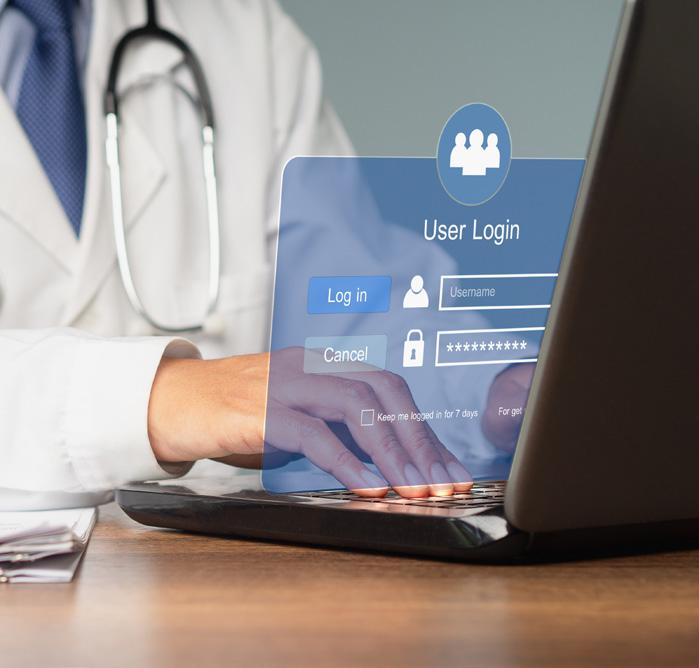
websites that provide reliable health and medical information, one of the best all-purpose sites that’s recommended by Consumer Reports for researching symptoms and conditions is MedlinePlus (medlineplus.gov).
A service of the National Library of Medicine, the world’s largest med



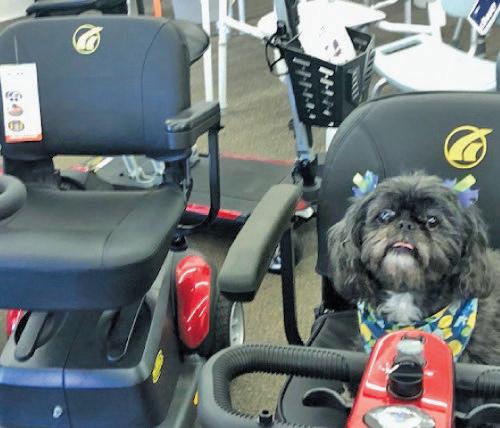
Also note that good health and medical information changes all the time so check the date that information was published to make sure it’s current.
Some other areas you need be wary of include online symptom checkers and artificial intelligence (AI) tools.
While symptom checkers do offer potential diagnoses that could fit your set of symptoms, they are often inaccurate and tend to err on the side of caution, says physician Ateev Mehrotra, a professor of health care policy at Harvard Medical School. AI tools, like ChatGPT, can also be wrong or generate false but scientific sounding information.
You also need to be cautious about using medical information from social media, online forums or YouTube. Comments in these places may sound authoritative even if the authors have no medical training or expertise.
While there are many excellent

Institute (nhlbi.nih.gov).
• Diabetes: American Diabetes Association (diabetes.org).
• Alzheimer’s disease: Alzheimer’s Association (alz.org) and Alzheimers. gov.
• Public health and vaccines: Center for Disease Control and Prevention (cdc.gov).
• Alternative medicine: National Center for Complementary and Integrative Health (nccih.nih.gov) and the National Institutes of Health’s Office of Dietary Supplements (ods. od.nih.gov).
Any research you do online before seeing a doctor, be sure to save or print your findings out on paper, including the site you got your information from, so you can review it together.
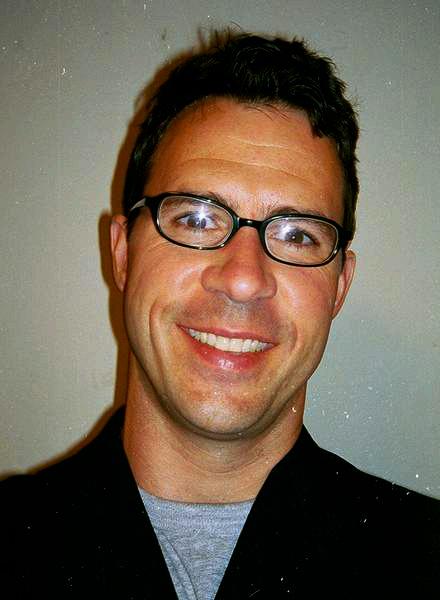
Send your senior questions to: Savvy Senior, P.O. Box 5443, Norman, OK 73070, or visit SavvySenior. org. Jim Miller is a contributor to the NBC Today show and author of “The Savvy Senior” book.








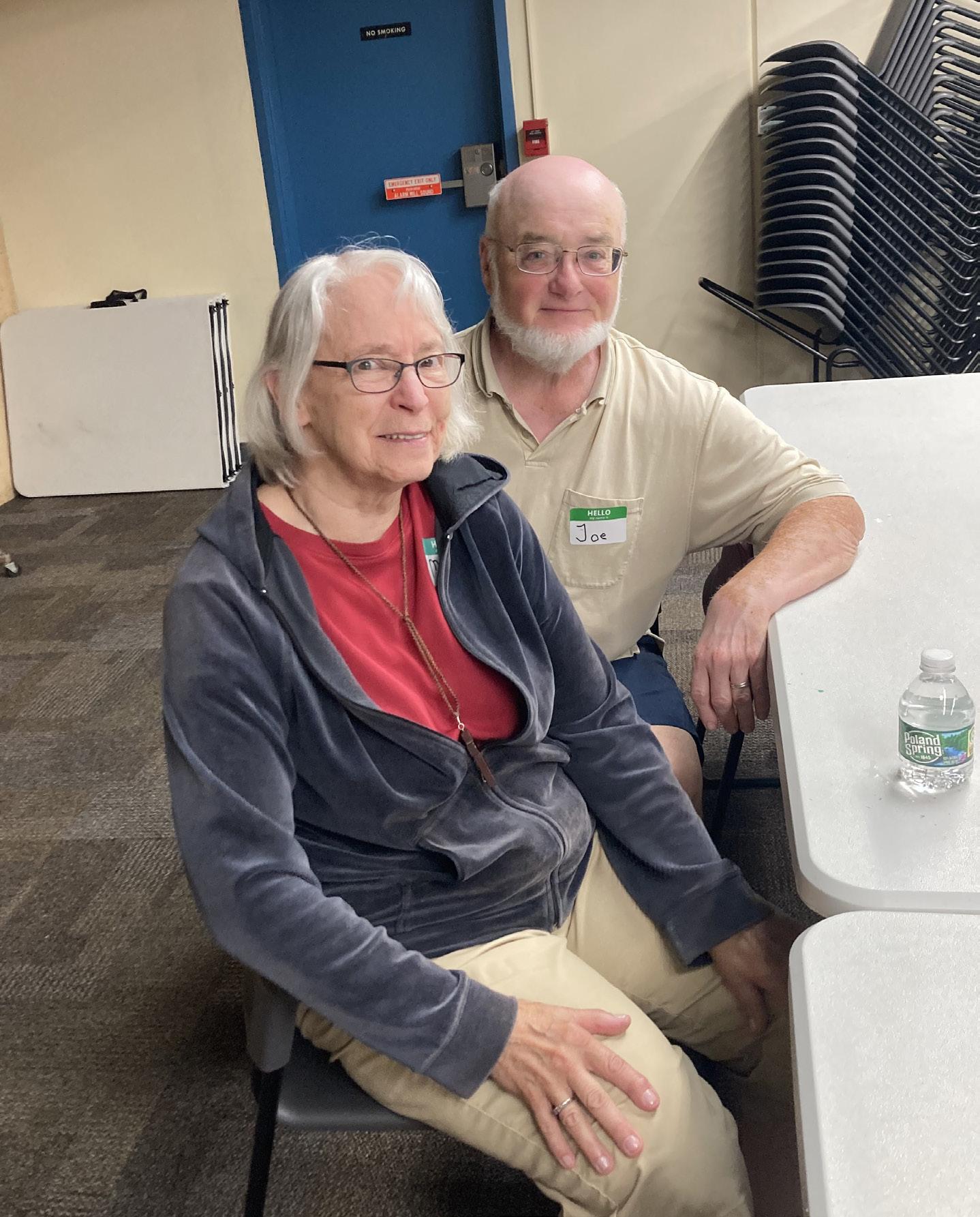
By Mary Beth Roach
Joe and Mary McCarthy joined a few others on a morning in June to take part in the first memory café, offered by the Onondaga County Public Library system at Hazard Branch Library, near Syracuse’s Tipp Hill neighborhood.
The program, launched by the OCPL this past spring, is designed to serve seniors who have memory issues and their caregivers. It is hosted at Hazard and the Betts Branch in the Valley.
Joe, 72, said that when he learned of the program at Hazard, he was eager to attend since it’s closer to the couple’s residence. Joe and Mary, 74, have attended a similar café hosted at a church in Dewitt and he enjoys the socialization and the singing.
And Hazard Branch’s program on this particular morning had a good amount of both.
Kate Kisselstein, with the OCPL’s local history and genealogy division, started her power point presentation on MacArthur Stadium (today known as the NBT Bank Stadium), with everyone singing “Take Me Out to the Ballgame.”
The photos in the presentation truly resonated with those attending the café, many of whom had spent many happy hours at the old stadium and they enjoyed sharing their memories. Baseball holds a special interest for the McCarthys, since the couple has been going to ballgames for 40 years.
The memorycafés, overall, offer “a place for seniors who are experiencing memory issues and their caregivers to come and be in a relaxed environment where there are activities going on, refreshments, social opportunities,” said René Battelle, administrator for public services for the city branches.
It takes them away from the stress for a bit, providing them a place they can relax, she said.
Anyone with memory issues, whether it’s been diagnosed or not, are welcome.
There is no registration, no residency requirements and it’s free.
Currently, they are held at 10:30 a.m. on the third Tuesday of the month at Hazard Branch Library at 1620 W. Genesee St. and at 10:30 a.m. on the fourth Thursday of the month at Betts Branch Library at 4862 S. Salina St.
The memory cafés came about because the OCPL staff wanted to a greater focus on senior programming, Battelle said, explaining that the libraries have children’s, teen and adult programming. Since the adult programs covered such a wide range of ages, OCPL wanted something more specific to seniors.
While the cafés are only getting started, Battelle said the response has been very positive.
“People like the fact that we’re doing this,” she said.
By Warren Beck Social Security District Manager in Syracuse.
Every July 4, we celebrate our nation’s independence. For nearly 90 years, our programs have helped create financial independence for millions of hardworking people. We have useful online resources like the Social Security Statement (statement) and our benefits estimator tool that helps people not yet receiving benefits. The statement shows the benefits that you and your family may be eligible for and provides personalized fact sheets tailored to your age and earnings situation. The benefits estimator tool allows you to get estimates based on different ages. These online tools can help you better prepare for your retirement.
If you’re not receiving benefits
You can get the most out of your online experience if you have a personal my Social Security account. You can:
• Request a replacement Social Security card.
• Get estimates for spouse’s benefits.
• Get your statement instantly.
• Get proof that you do not receive benefits.
Q.: I haven’t received my Social Security Statement in the mail the last few years. Will I ever get one again?
A.: We currently mail Social aged 60 and over who aren’t receiving Social Security benefits and do not yet have a personal My Social Security account. We mail the statements three months prior to your birthday. Anyone can access their statement online if they have a personal My Social Security account. We encourage you to create your own account at www. ssa.gov/myaccount and check your statement at your convenience.
Q.: I am receiving Social Security retirement benefits and I recently went back to work. Do I have to pay Social Security (FICA) taxes on my income?
A.: Yes. By law, your employer must withhold FICA taxes from your paycheck. Although you are retired, you do receive credit for those new earnings. Each year Social Security automatically credits the new earnings. If your new earnings are higher than in any earlier year used to calculate your current benefit, your monthly benefit could increase. For more information, visit www.ssa. gov or call us at 1-800-772-1213 (TTY 1-800-325-0778).
Q.: My doctor said he thinks I have a disability. Who decides if I meet the re-
• Check your application status. If you’re receiving benefits
You can use your personal my Social Security account to:
• Request a replacement Social Security card.
• Get an instant benefit verification letter.
• Start or change your direct deposit. (Social Security beneficiaries only)
• Change your address. (Social Security beneficiaries only)
• Get a replacement SSA-1099 or SSA-1042S instantly for tax season.
• Opt out of mailed notices for those available online.
You can create your personal my Social Security account at www.ssa. gov/myaccount.
Our blog at blog.ssa.gov features news and information about our programs and services. You can subscribe and get notified each time we post a new blog so you can stay informed. From the blog, you can also connect with us on Facebook, X, LinkedIn, Instagram, and YouTube.
With so many services and helpful information available online, we are here for you when you need us. Learn more at www.ssa.gov.
quirements for Social Security disability benefits?
A.: We first will review your application to make sure you meet some basic requirements for Social Security disability benefits, such as whether you worked enough years to be eligible for benefits. Then we will send your application to the disability determination services office in your state, often called the “DDS” or “state agency.” Your state agency completes the disability decision for us. Doctors and disability specialists in the state agency ask your doctors for information about your condition. They consider all the facts in your case. They use the medical evidence from your doctors and hospitals, clinics, or institutions where you have been treated and all other information.
The state agency staff may need more medical information before they can decide if you have a disability. If more information is not available from your current medical sources, the state agency may ask you to go for a special examination. We prefer to ask your own doctor, but sometimes the exam may have to be done by someone else. Social Security will pay for the exam and for some of the related travel costs. Learn more at www.ssa.gov/ disability.

John E. Klibanoff, a distinguished
John E. Klibanoff orthopedic surgeon and clinical leader, has joined Auburn Orthopaedic Specialists (AOS) affiliated with Auburn Community Hospital. Klibanoff brings a wealth of experience from Western New York Orthopaedics, a Rochester Regional Health system practice in Rochester. His educational background includes a medical degree from the University of Massachusetts Medical School and orthopedic residency training at the University of Minnesota in Minneapolis. In addition, Klibanoff is a retired lieutenant colonel and decorated veteran serving in the U.S. Army and Reserve from 1990-2005.
Previously attending surgeon and owner of Orthopaedic Associates of Rochester, and for the past five years lead orthopaedic surgeon at Rochester Regional Orthopaedics at Ridgeway and Linden Oaks Medical Centers, Klibanoff’s expertise spans joint reconstruction, limb reconstruction, sports injury and trauma. He is board-certified by the American Board of Orthopaedic Surgery and a fellow of the American Academy of Orthopaedic
“Dr. Klibanoff’s extensive experi ence in esteemed healthcare systems makes him a valuable addition to our team of local orthopedic practitioners and to Auburn Community Hospi tal,” said Scott A. Berlucchi, president and chief executive officer of Auburn Community Hospital.
Christine Corbett of Manlius
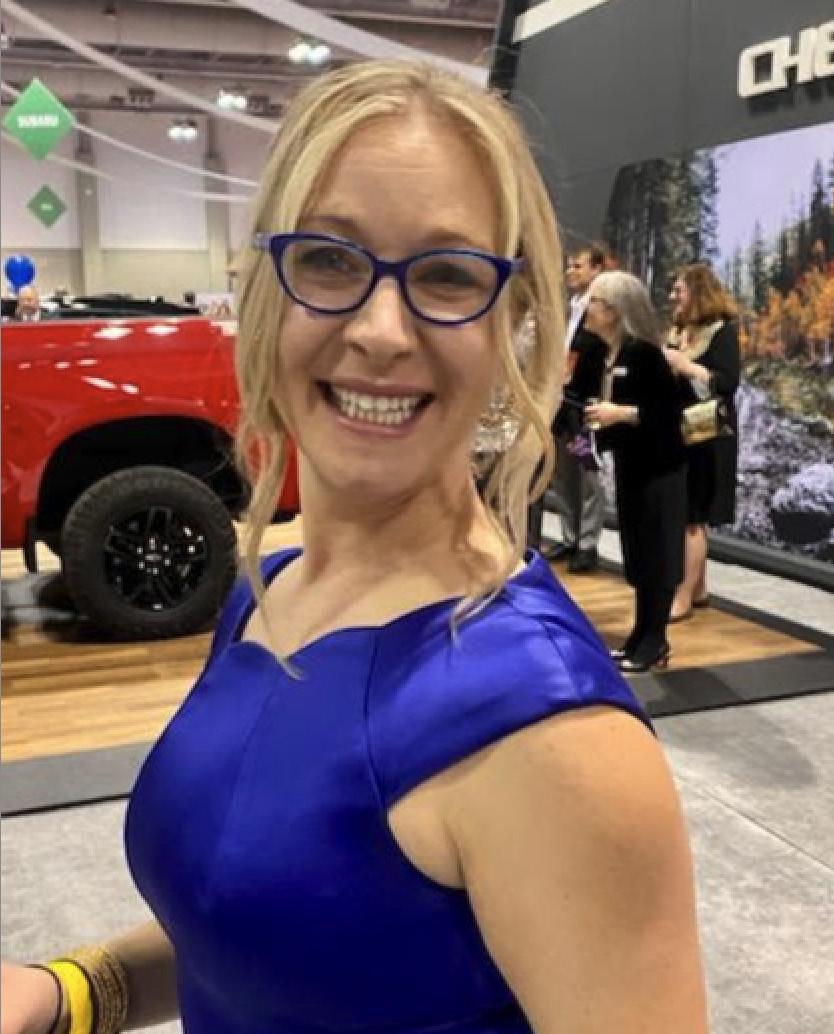
In addition, Corbett will supervise development staff in all three chapters, manage corporate sponsorships and partnerships, cultivate major and planned gifts and oversee special events.
“We are so pleased to have Christine on our team,” says Kate Flannery, executive director for Upstate New York Chapters. “Her passion for her work, her knowledge of fundraising and the development process, and her vast network of local individuals and companies make her the perfect individual for this vital role.”
Corbett most recently served as director of philanthropy for David’s Refuge, a nonprofit organization providing respite, resources and support to families of children with special needs or life-threatening medical conditions.
In her six years at David’s Refuge, revenue was nearly tripled through engaging dedicated and hardworking volunteers and philan thropists. During that time, she also successfully managed special events, corporate partnerships, leadership giving and grant funding.
Prior to David’s Refuge, Corbett served as director of development for Make-A- Wish Central New York and in development positions at the Hospice Foundation and United Way of Central New York.

has been named vice president for development for the Upstate New York Chapters of the Alzheimer’s Association. In this newly created position, Corbett is responsible for the fundraising and development operations of three Upstate New York chapters of the Alzhei mer’s Association, including Central New York, Rochester – Finger Lakes region and Western New York.
Her primary focus is the Walk to End Alzheimer’s, the world’s largest event to raise awareness and funds for Alzheimer’s care, support and research programs. Fourteen walks are held throughout the Upstate New York Chapters each fall, with a combined 2024 revenue goal of $2.2 million.
nursing positions during her tenure, including managing long-term care units and serving as an educator. Earlier this year, she earned a bachelor’s degree in nursing. She will oversee more than 150 direct care staff including registered nurses, licensed practical nurses, and certified nursing assistants. She is responsible for quality assurance, policy updates, and process management to ensure positive outcomes for residents. Both women led in interim roles in their respective positions since January 2023.

Two veteran Loretto team members who work at The Commons on St. Anthony in Auburn have recently been promoted.
• Jolene Crehan has been pro
moted to administrator and will supervises a staff of 361 and nine departments, overseeing day-to-day operations, census and financial operations. Crehan has worked at Loretto for almost 20 years. She began her career with Loretto at The Commons in 2005 as a certified nurse aide. She became a registered nurse in 2007 and received a Bachelor of Science in nursing in 2020, most recently serving as director of nursing at The Commons. Earlier this year, Crehan obtained a nursing home administrator certification from Utica University, passed her boards, and became a licensed nursing home administrator (LHNA).

• Rebecca (Becky) Staring has
been promoted to director of nursing. She has 25 years of nursing experience working at Loretto and at The Commons. She started as a certified nurse aide in 1999. She became a registered nurse in 2003 and has held numerous
Farnham Family Services, Oswe
Chris Baszto go County’s leader in substance use disorder treatment and prevention, has named Christopher Baszto as the organization’s new executive director. Baszto succeeds Eric Breese who died unexpectedly in November 2023.
Baszto brings a wealth of experience to his new role, having worked for Farnham in a variety of capacities since October 2011.
A member of Farnham’s executive leadership team, Baszto has previously served as an outpatient clinician, senior clinician, outpatient program director, senior director of services, and interim co-executive director.
“Being named executive director comes with a sense of duty as a servant leader to help carry the torch into the future,” Bastzo said. “Having been with Farnham for 13 years, I have come to care deeply about the work that we do and feel that we have a commitment to the community we serve, as the sole provider of comprehensive substance use disorder prevention, treatment, recovery, and harm reduction services.”
Baszto is a native of Watertown and earned a bachelor’s degree in biochemistry with honors from Queen’s University in Kingston, Ontario, Canada. He and his wife then moved to Seattle, where he attended Bastyr University to study naturopathic medicine. While in naturopathic medical school, Baszto fell in love with the theory and practice of depth psychology and continued his studies at the Pacifica Graduate Institute in Southern California, where he earned a master’s degree in counseling psychology, emphasizing in depth psychology. After graduation, Baszto and his wife made the decision to move back home to the east coast to begin their careers and start a family, feeling the importance of giving back to their communities and raising their son surrounded by loving grandparents and extended family.
Applications are now being accepted! 62+ No smoking!
SIMEON DEWITT
150 E. 1st St. Oswego, NY 13126 315-343-0440
TOWPATH TOWERS
100 Rochester St. Fulton, NY 13069 315-598-4700
SPRINGBROOK APARTMENTS
4920 N. Jefferson St. Pulaski, NY 13142 315-298-6101
The following services are included in your rent
• Trash Collection • Free Wi-Fi
• Bus for shopping/groceries
• Heat, Electricity & Hot Water
• Snow Removal & Lawn Care
• Planned Activities
• All repairs & maintenance
Preference given for veterans & spouses of veterans.
Equal Housing Opportunity Supervised by NYS DHCR


Physician Stephan Barrientos,
St. Joseph’s Health recently wel

Stephen Barrientos Dentistry and completed residencies at Brody School of Medicine/ ECU and University of Nebraska Medical Center.
Barrientos received craniofacial fellowship training at The Craniofacial Center as well as fellowship training at Hospital for Special Surgery and Winthrop-NYU Langone for wound healing. He is a native of New Hyde Park, New York, and is welcoming new patients.
comed Jenna Wagenblatt, licensed physician assistant, to St. Joseph’s Physicians Family Medicine in Liverpool.
Wagenblatt received her Bachelor of Science in psychology from Sacred Heart University in Fairfield, Connecticut, where she graduated magna cum laude, played on the women’s rugby team and worked as a research assistant.
She earned her Master of Medical Science from George Fox University in Newberg, Oregon, where she was part of the PA student board. She has completed clinical rotations in pediatrics, endocrinology, family medicine, OB-GYN and cardiology.
Wagenblatt has spent many years
Breyah Ogletree, an aide at Crouse Health’s environmental services, has been selected as the 2024 recipient of the Joan Fernbach Kingson Award.
Kingson was a nurse and educator who died in 2001. She was a patient at Crouse.
Breyah was nominated by her supervisor, who remarked on Breyah’s friendly disposition and cheerful smile.
The Joan Fernbach Kingson Award was established to recognize service or technical workers whose special interactions with patients and families give vivid expression to the values of care which Kingson was committed to in her work with children and families.
Those values include treating each patient as an individual; respecting the social, emotional, intel-
lectual, spiritual and physical needs of others and welcoming families, especially the young, into the caring process.
The often unseen gifts of service and technical workers acknowledged by this award include the gift of careful listening, the simple joy of human-to-human conversation, the sharing of silence or the warmth of touch. In giving of themselves so generously to others, awardees help sustain the essence of humanity and exemplify the best traditions of Crouse Health.
This annual cash prize is made possible by the family and friends of Kingson. Syracuse University professor Eric Kingson was her husband and is the author of “Lessons from Joan — Living and Loving with Cancer, a Husband’s Story.”
ConnextCare recently announced the winners of the annual Kathy A. Ellis Scholarship. This year’s winners were Mea Coppola and Raechel Fleischmann, both 2024 graduates of Paul V. Moore High School. This marks the first year that ConnextCare chose two awardees for this scholarship.
volunteering and engaging in diverse communities locally and abroad, traveling as far as Haiti, South Africa and Zimbabwe.
“There are so many commu nities, not only around the world, but here in the U.S., that need help with some of life’s basic needs,” said Wagenblatt. “I find it fulfilling and necessary to aid in changing some one’s life and health for the better. As a primary care provider, I look forward to continuing to provide for the wonderful patients at St. Joseph’s Physicians Family Medicine.”
Stephanie Benavidez has been promoted to radiology manager at Oswego Health. She started in the imaging department at Oswego Hos pital in 2016, before transitioning in 2019 to the radiologic technologist at the Center for Orthopedic Care.
Born and raised in Phoenix, southern Oswego County, Benavidez graduated with a Master of Business Administration from University of St.

Science in health services administration in 2007. She earned her certificate of radiography from St. Mary’s Hospital in West Palm Beach, Florida in 1993 and has been licensed in New York state since 1994. Benavidez will manage the outpatient centers at Oswego Health Services Center, Pulaski Health Center, Fulton Medical Center and Central Square Medical Center.
“I originally started my career at a large hospital in Central New York and it just didn’t feel like a family or team. To have this new leadership opportunity in a place that I call home is just amazing. I’m excited to get more involved within the community to provide the best care possible locally,” she said.

her anticipated graduation in 2028, Fleischmann plans to join the United Stated Arny Nurse Corps and eventually go back to school to complete her master’s and doctoral degrees.
This fall, Coppola will be pursuing a Bachelor of Science degree in nursing at Siena College. Coppola plans to become a registered nurse and then ultimately become a nurse anesthetist.
Fleischmann will be pursuing a Bachelor of Science degree in nursing at Niagara University this fall. Upon
“We were delighted to award two winners of the Kathy Ellis Scholarship this year. This award means a great deal to our community as it celebrates the life of Kathy Ellis, a trailblazer in the nursing profession in New York state,” said Nancy Deavers, ConnextCare senior vice president and chief nursing and quality officer. “Both Mea and Raechel presented exceptional applications and the ConnextCare team is thrilled to assist them in continuing their education in the field of Nursing. We
are excited to see the great successes in their future.”
Kathleen A. Ellis, was the first nurse practitioner in New York state. Ellis was well known Central New York for her passion and commitment to serving our rural population. She worked at Northern Oswego County Health Services, Inc. (NOCHSI), which is now ConnextCare, at the Pulaski location, and spent four years working at NOCHSI’s Mexico Health Center. The community mourned the loss of Ellis when she lost her battle with cancer and died in December of 1996 at the age of 52.
When
every mom receives the care she needs,

Along with the Blue Cross Blue Shield Association, we’re committed to reducing racial and ethnic maternal health disparities by 50% in 5 years. Join us and take action today:
Childbirth complications are 46% higher among Black mothers. Anyone can help by learning more about this urgent issue. (Tip: start with our podcast episode)1

Every expecting mother should receive unbiased, high-quality care. Examine your own implicit biases. What might need to change?
Support policies and organizations that increase access to affordable, culturally sensitive maternal healthcare. Let the expecting mothers in your life know they have a voice, are being heard, AND believed.
Get the facts in our episode “Reducing Racial Disparities in Maternal Health” with Dr. Cuyler at ExcellusBCBS.com/ podcast or wherever you listen to podcasts.


